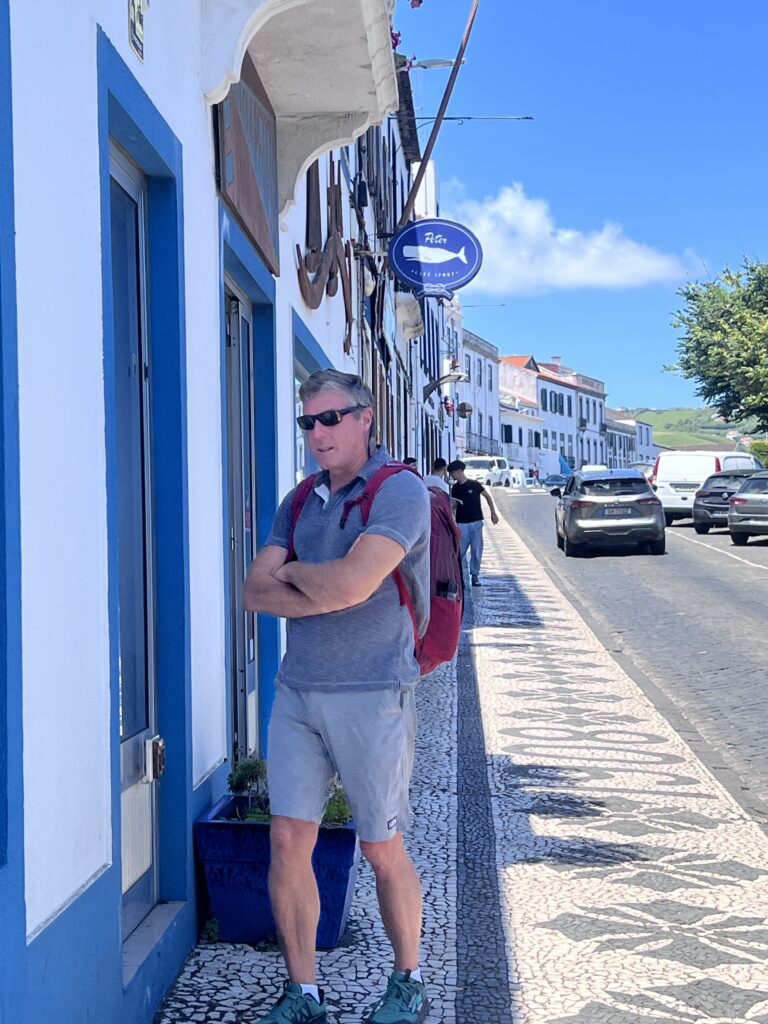
Well gentle reader, we have arrived in what appears to be Heaven! They call it the Azores but that’s just to keep it a secret from the rest of us. The skies are blue, the sea is clear as glass and the firmament is a color wheel of greens and browns and reds. The water is filled with dolphins, whales and tuna. Best of all the temps are comfy day and night! Great sleeping weather.
The last 500 miles to Horta were a mixed bag of calms and wind but over the course of the passage we used every sail in our inventory. From triple-reefed main and staysail in a 35kt gale with 10′ seas to spinnaker in 8kt zephyrs and flat water. Along the way we caught a nice Yellowfin Tuna! It made several meals worth of steaks, which Nancy prepared to perfection. In fact, we’re having the last of it tonight for dinner. Yay! We arrived on June 14th, our 25th wedding anniversary, so we dropped the hook and had a celebratory toast to the completion of a 2,000nm passage and a 25 year love affair (AWW, I know, right?).
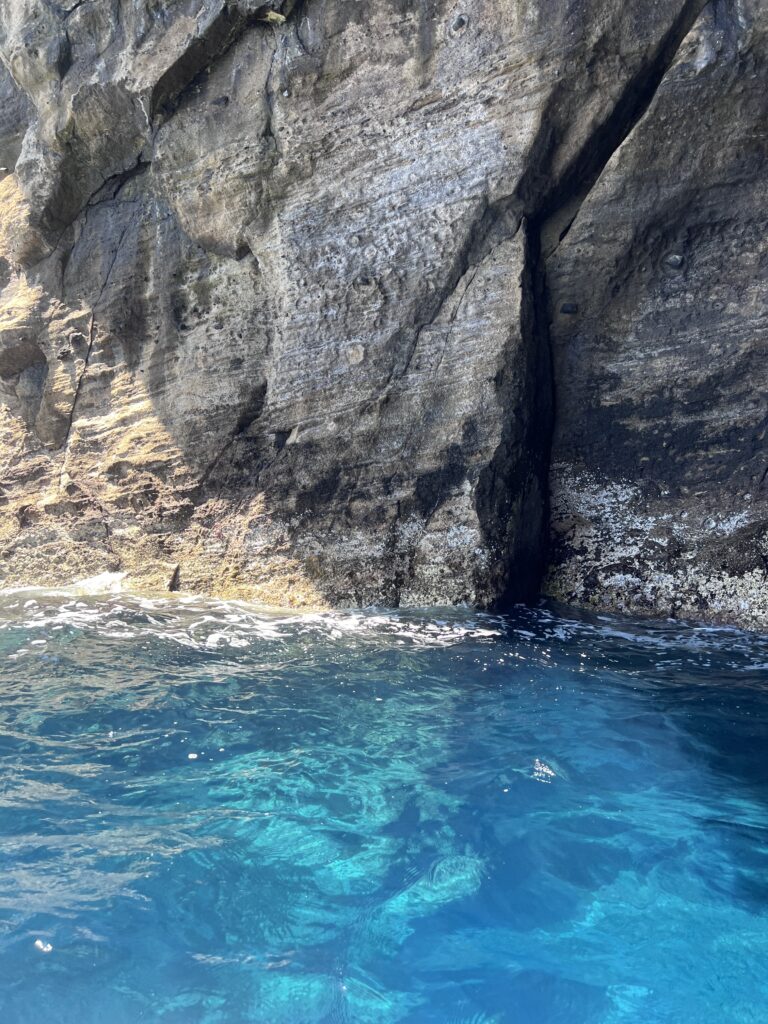
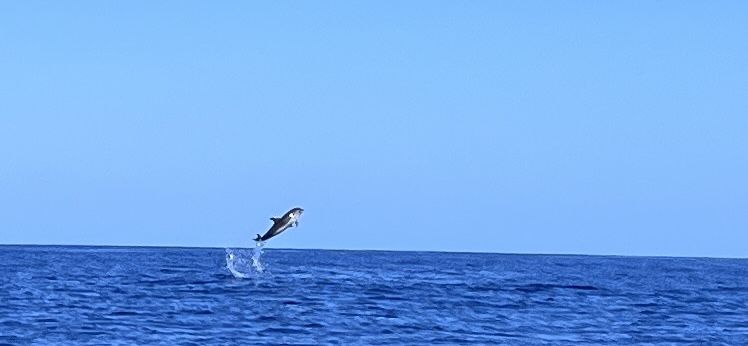
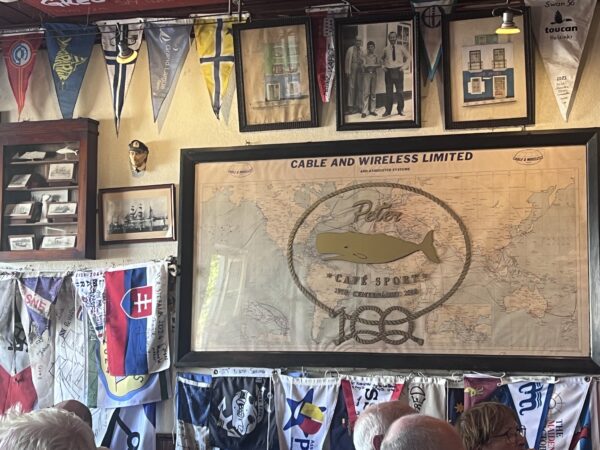
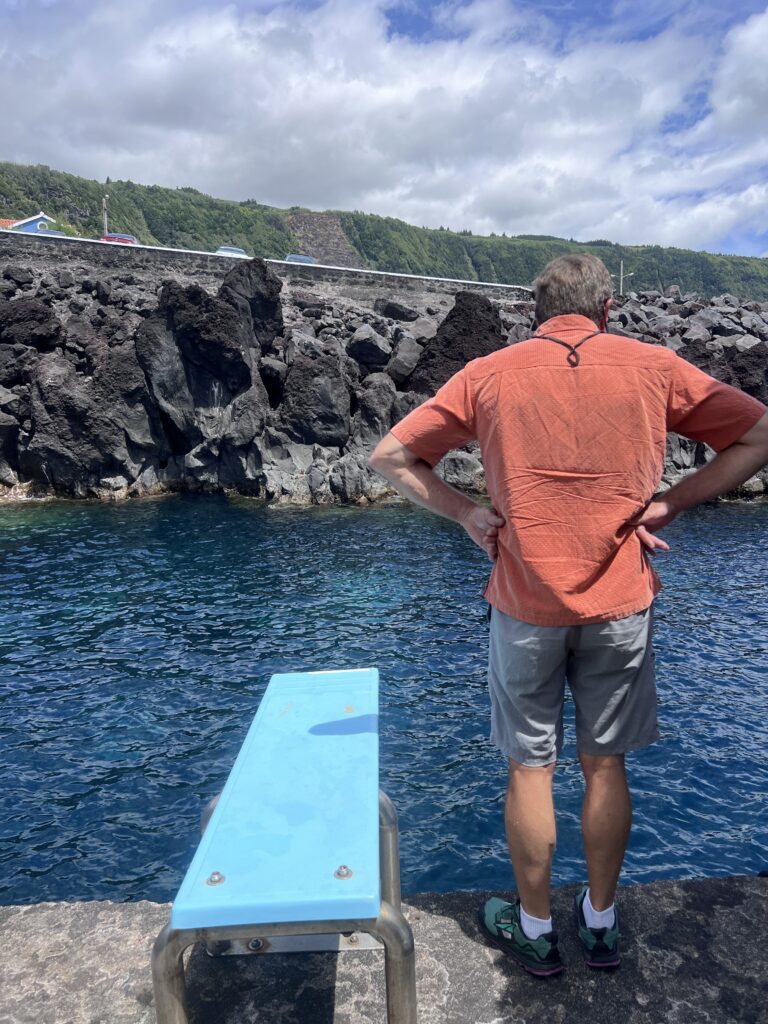
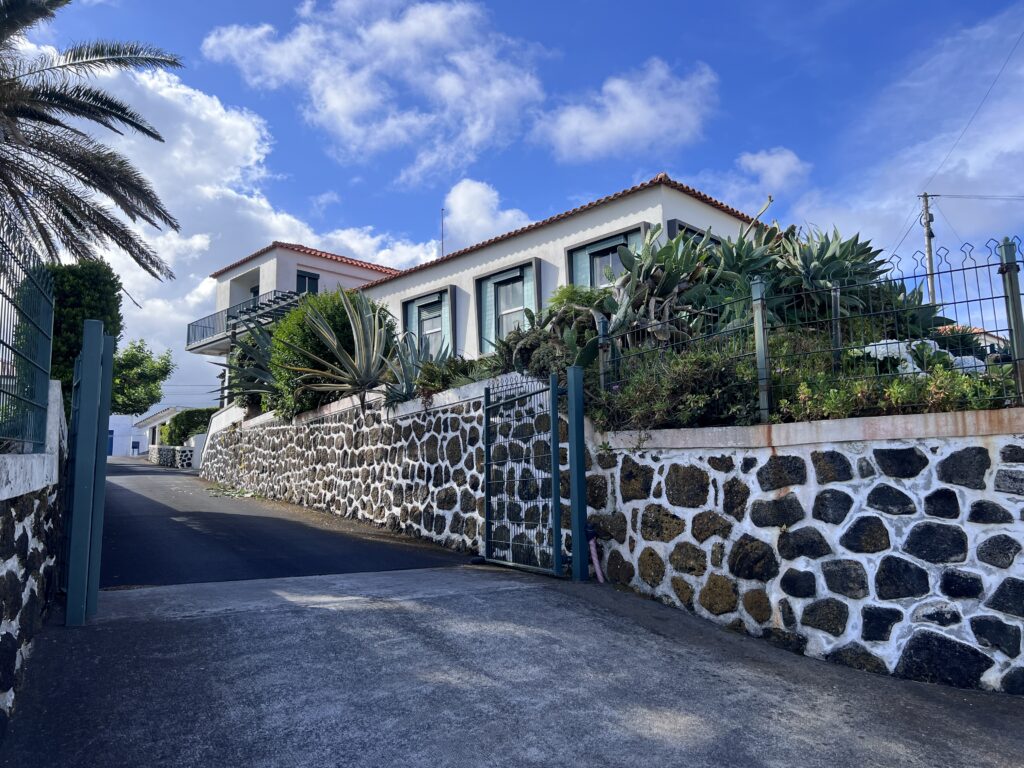
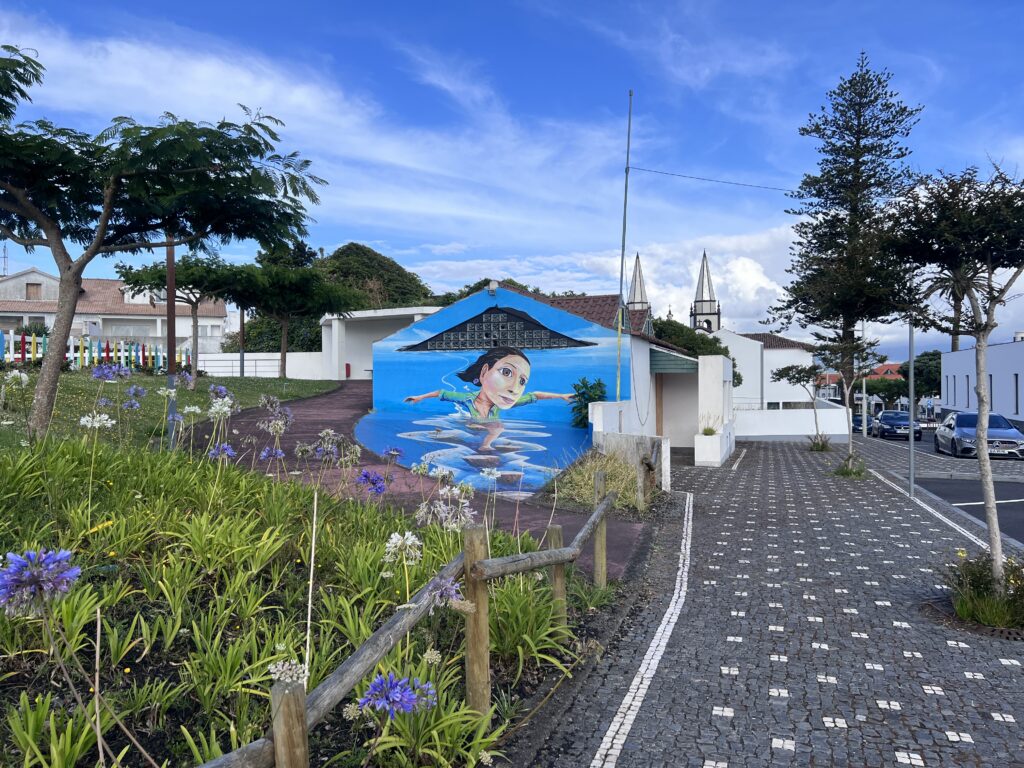
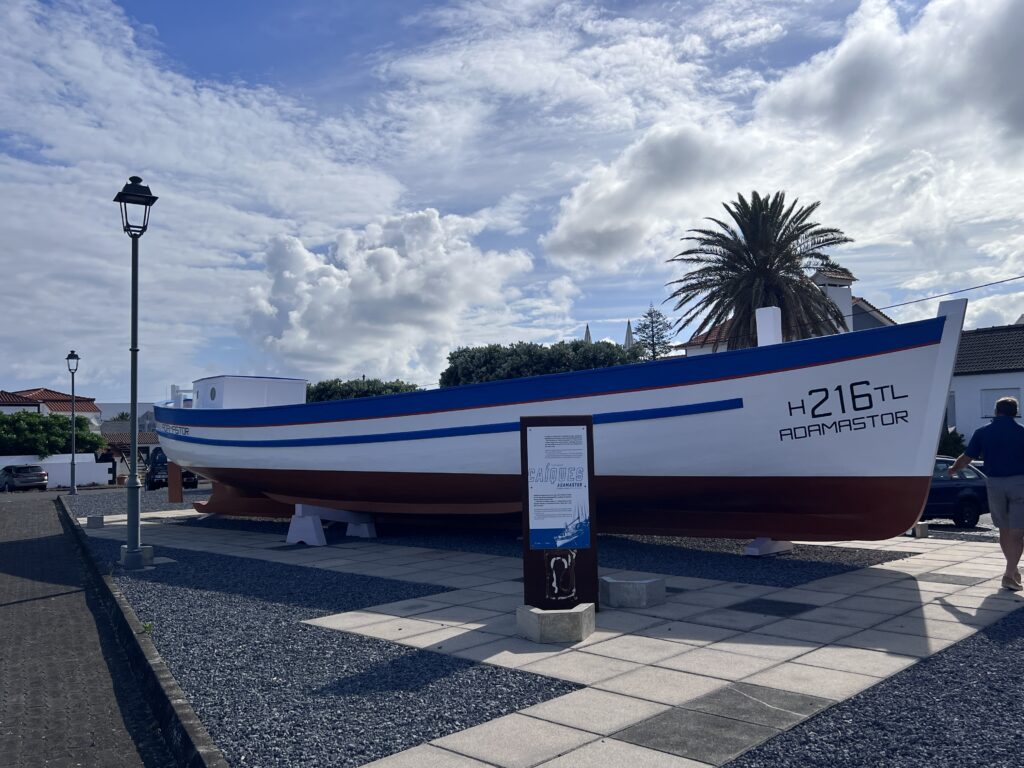
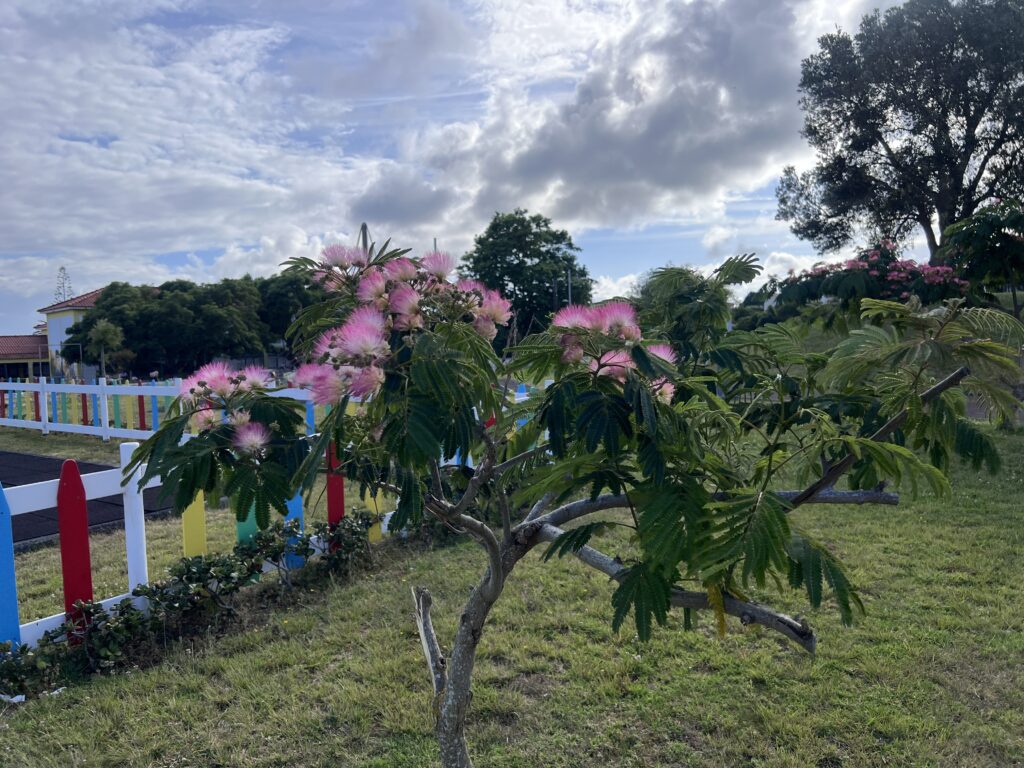
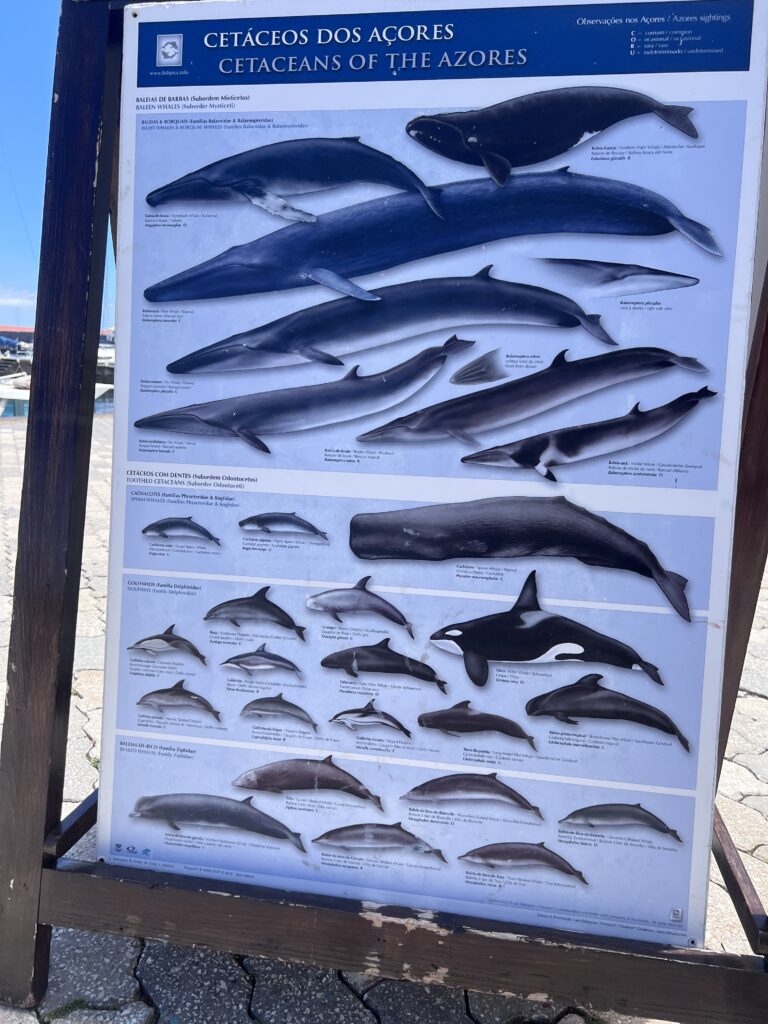
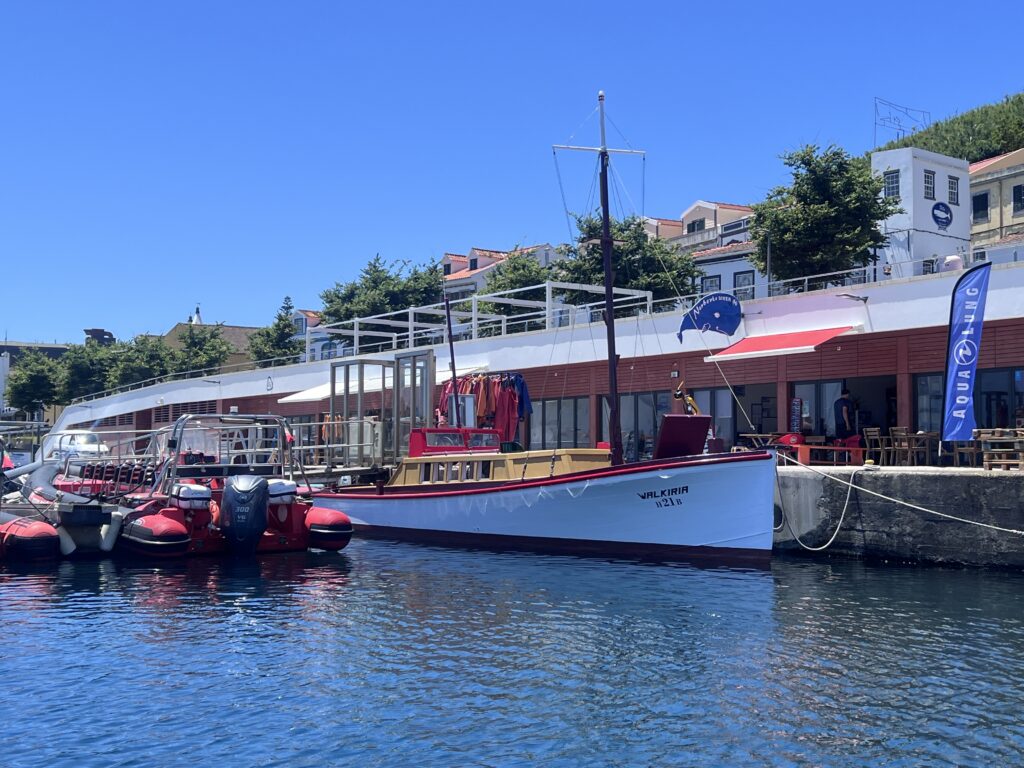
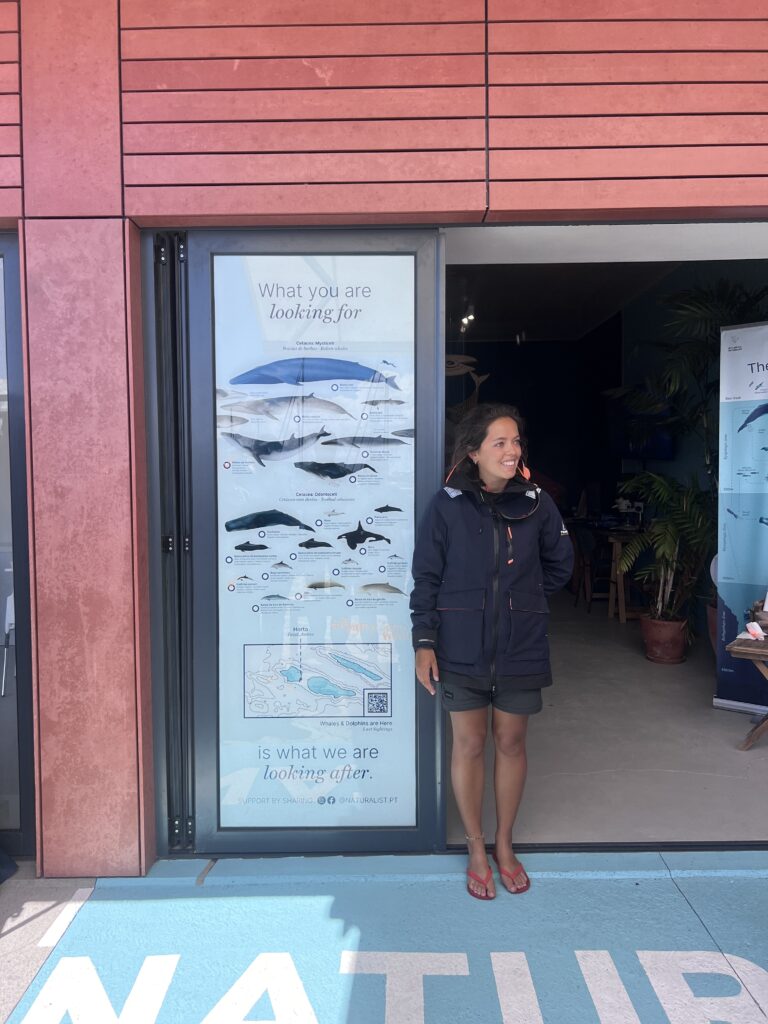
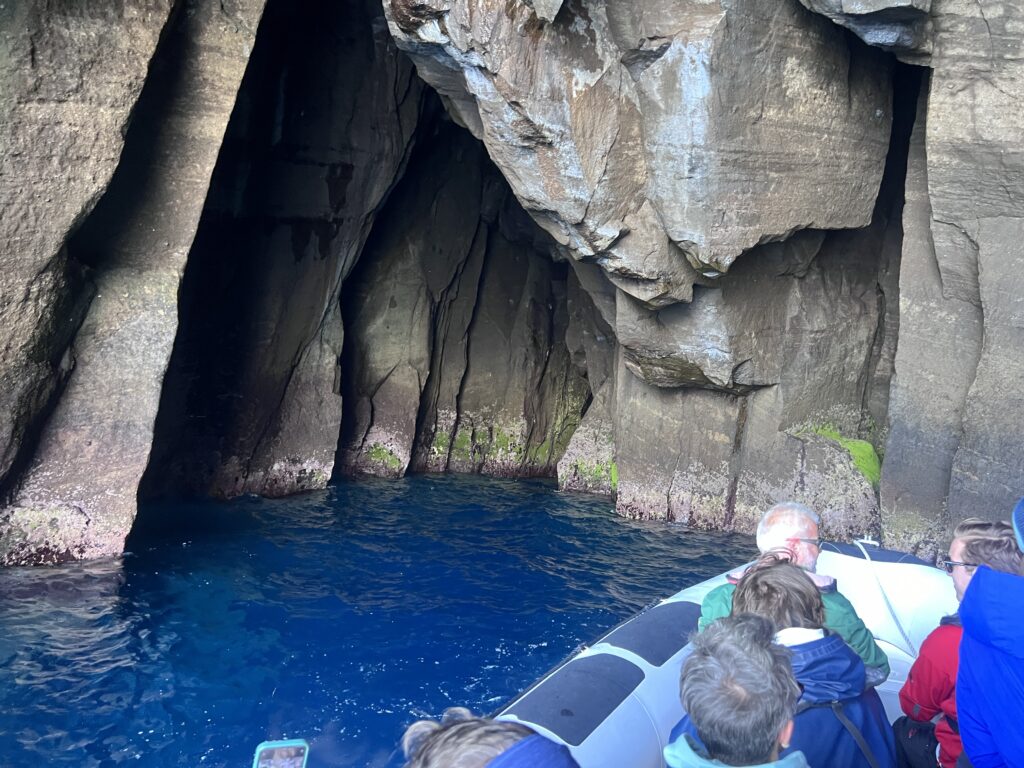
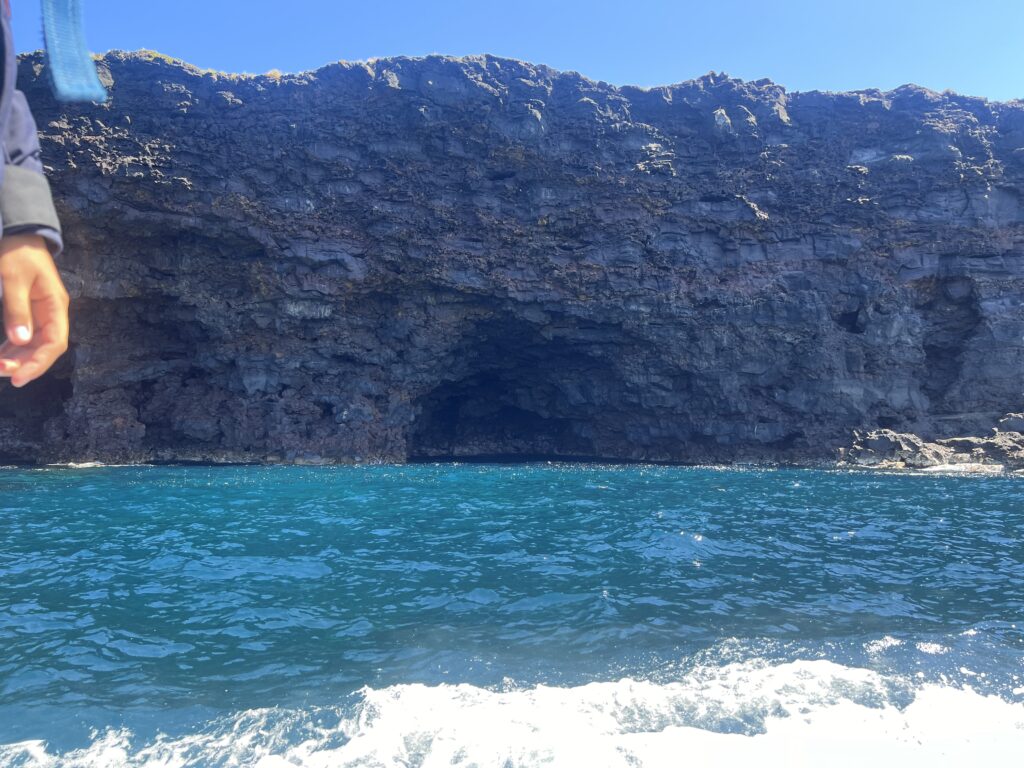
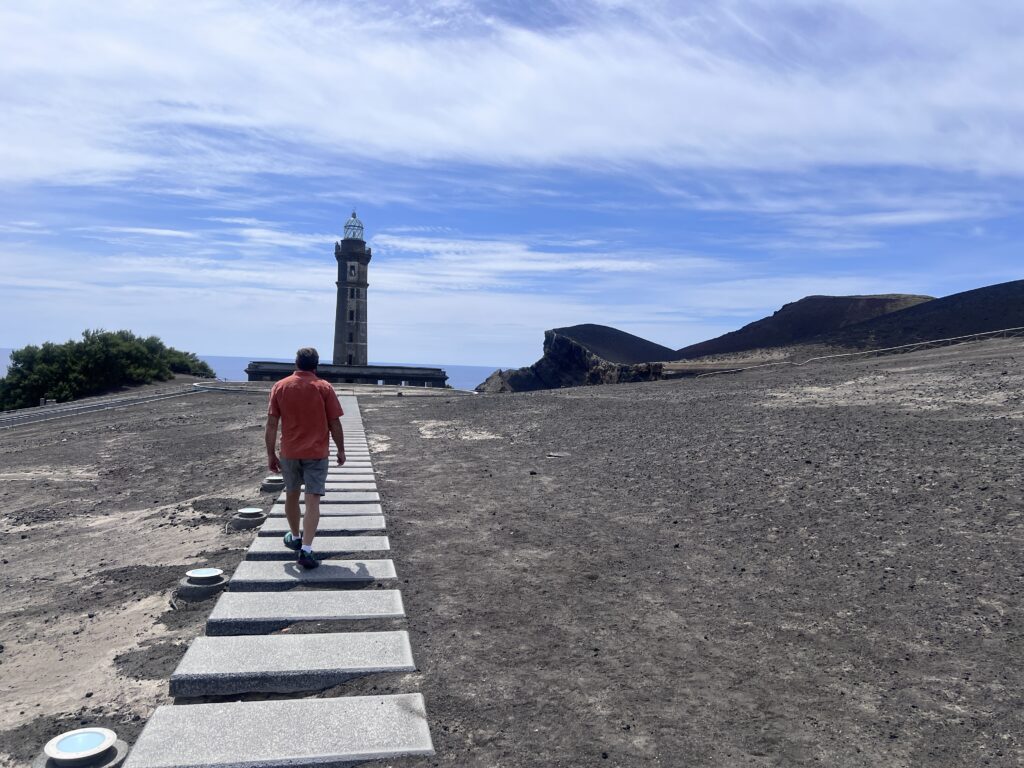

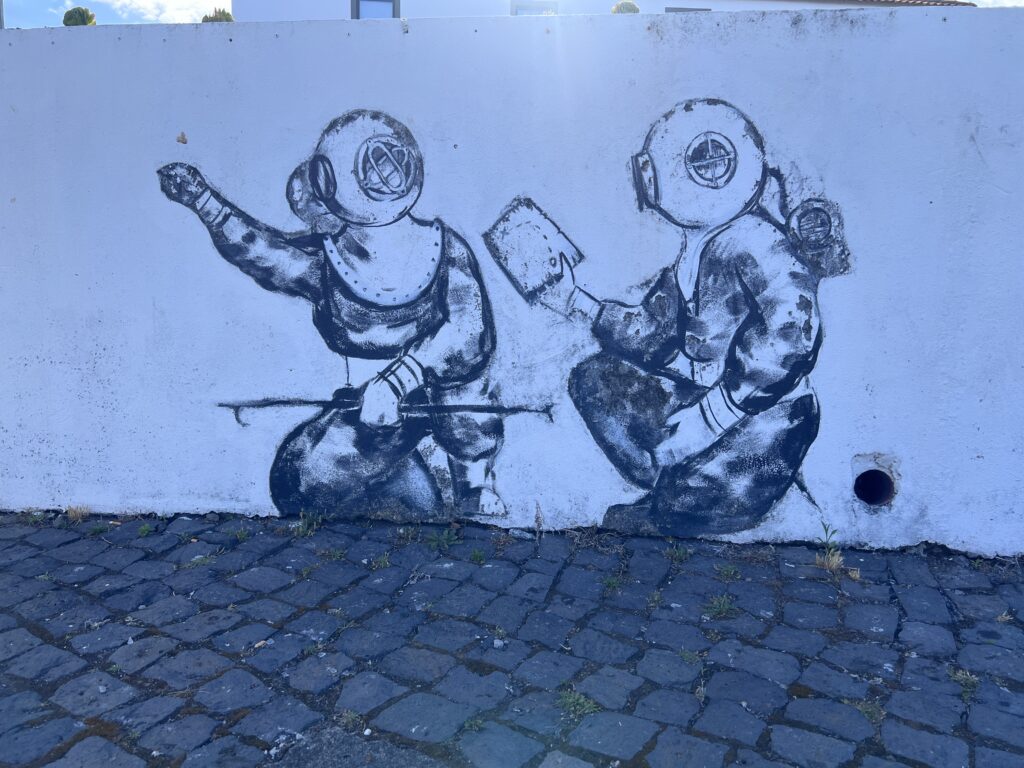
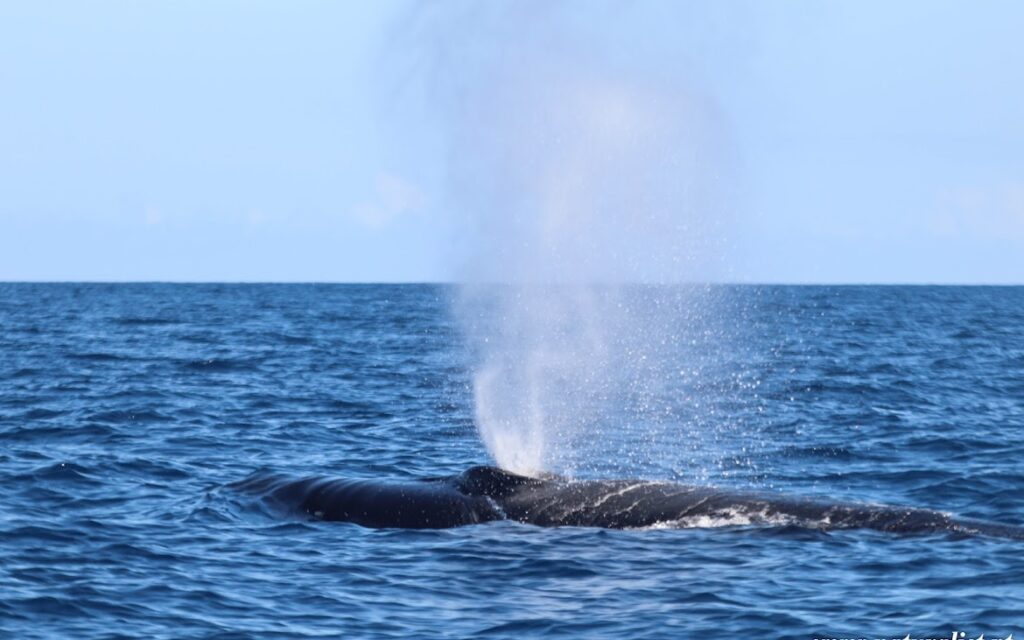
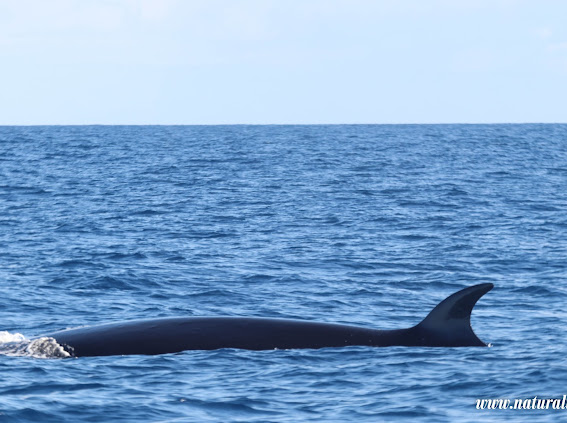
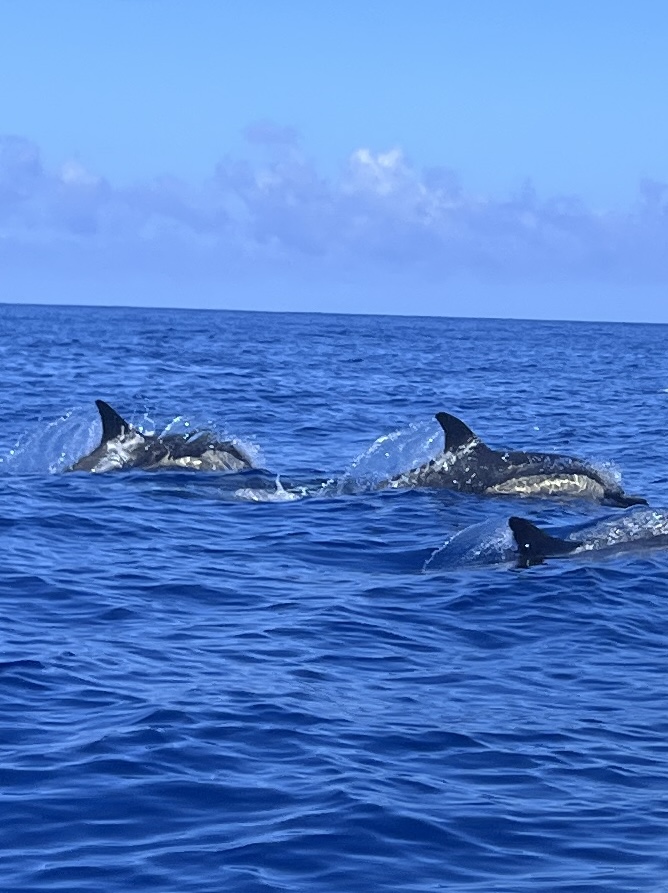
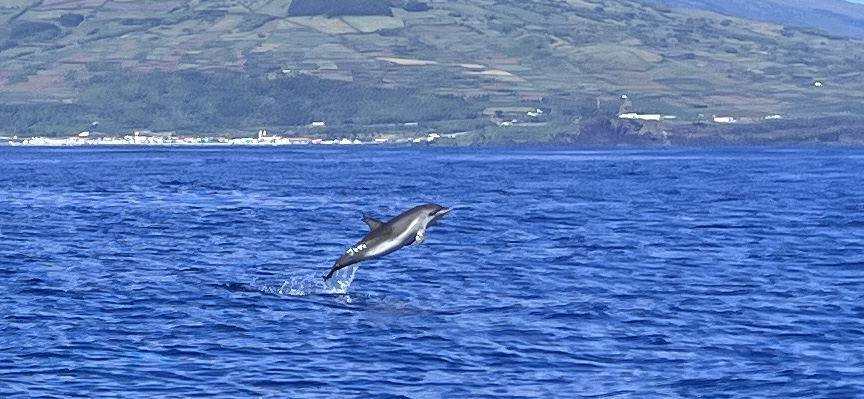
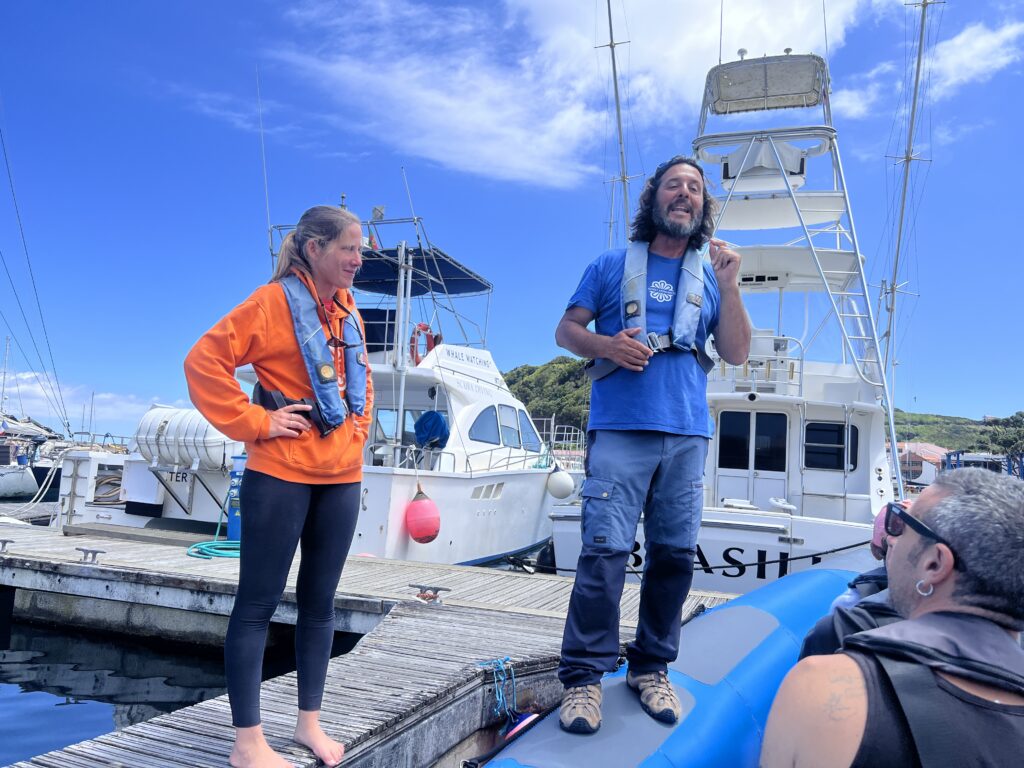

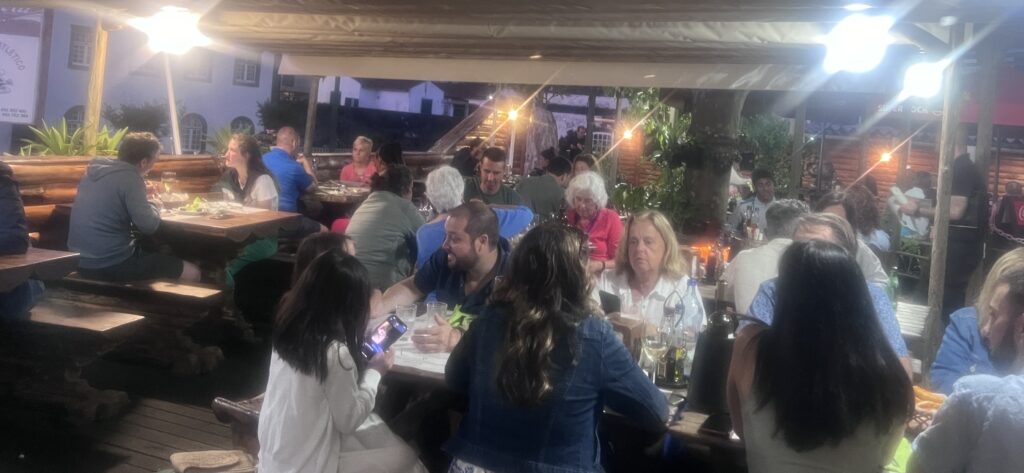
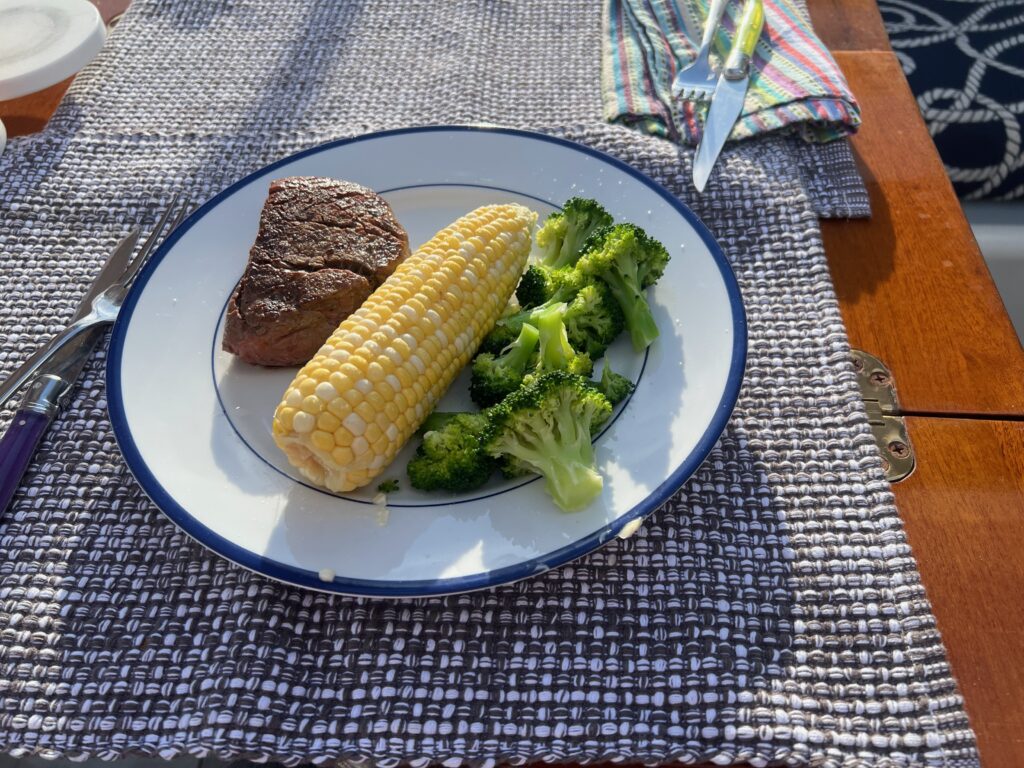
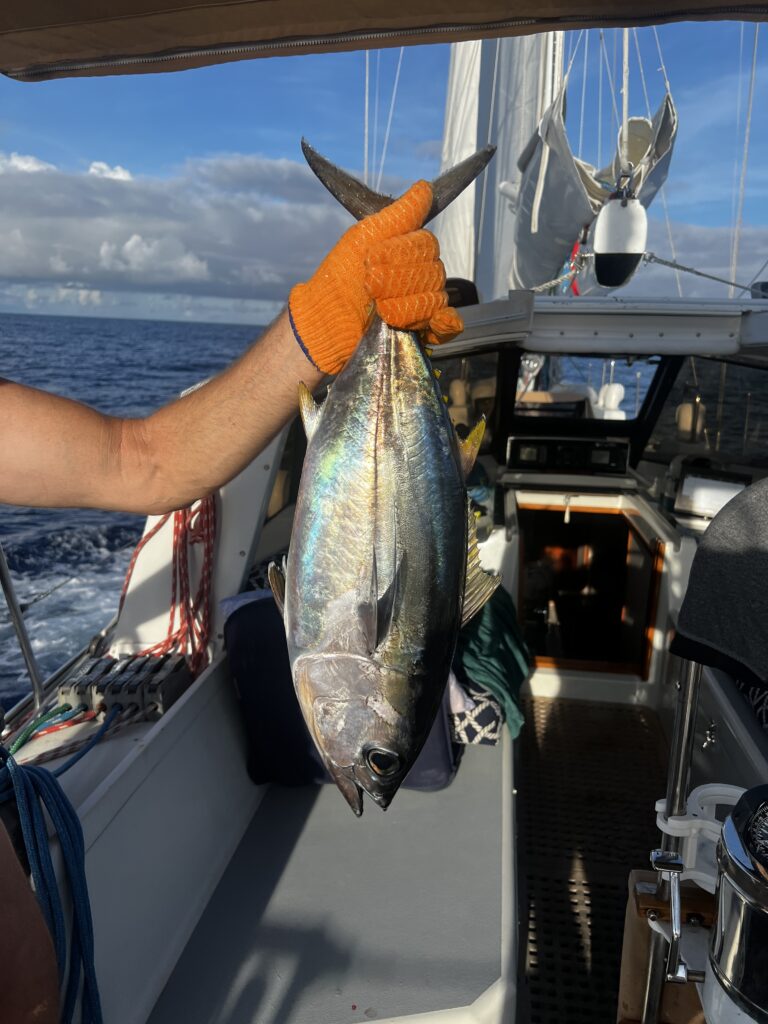
Horta, the main port in the Azores is truly the crossroads of the Atlantic. From the days of whaling ships to the laying of trans-Atlantic telegraph cables to the voyagers of today, everyone passes through here. From our anchorage in the harbor we could see no fewer than 10 different national flags flying from yachts, and at Peter Sport Cafe, the sailor’s meeting place for over 100 years, it is a bedlam of languages and glasses raised to new arrivals. It warms my heart just writing about it.
So, we’ll start with Peter Sport. It is a sailor’s cafe where the walls and ceiling are filled with memorabilia from the last 100 or so years. It is a tradition to hang a flag representing your boat. You give them your flag and they give you one of theirs. Of course, we sewed a ZEPHYR pennant and it hangs proudly in view. The other tradition is to paint your boat sign on the pier or sea walls surrounding the harbor. It is said that if you fail to do this you will have a bad passage. So, not wanting to tempt the Gods, Nancy dutifully painted an original on canvas that we epoxied to the wall near the customs house. It really is unique, I think.
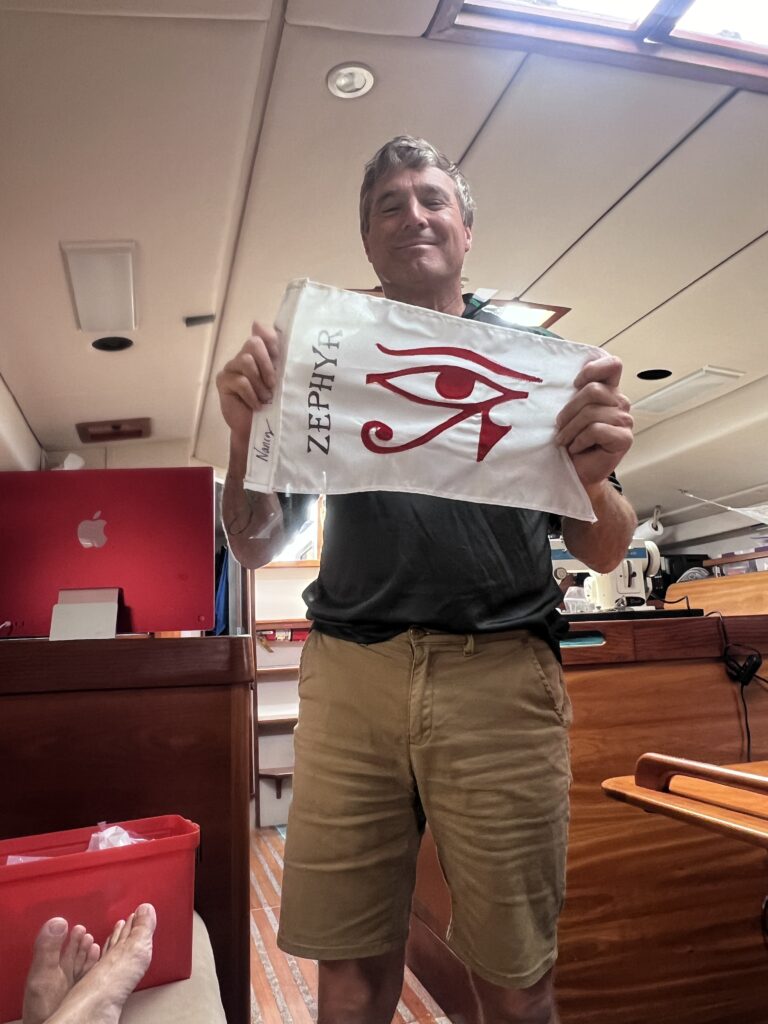
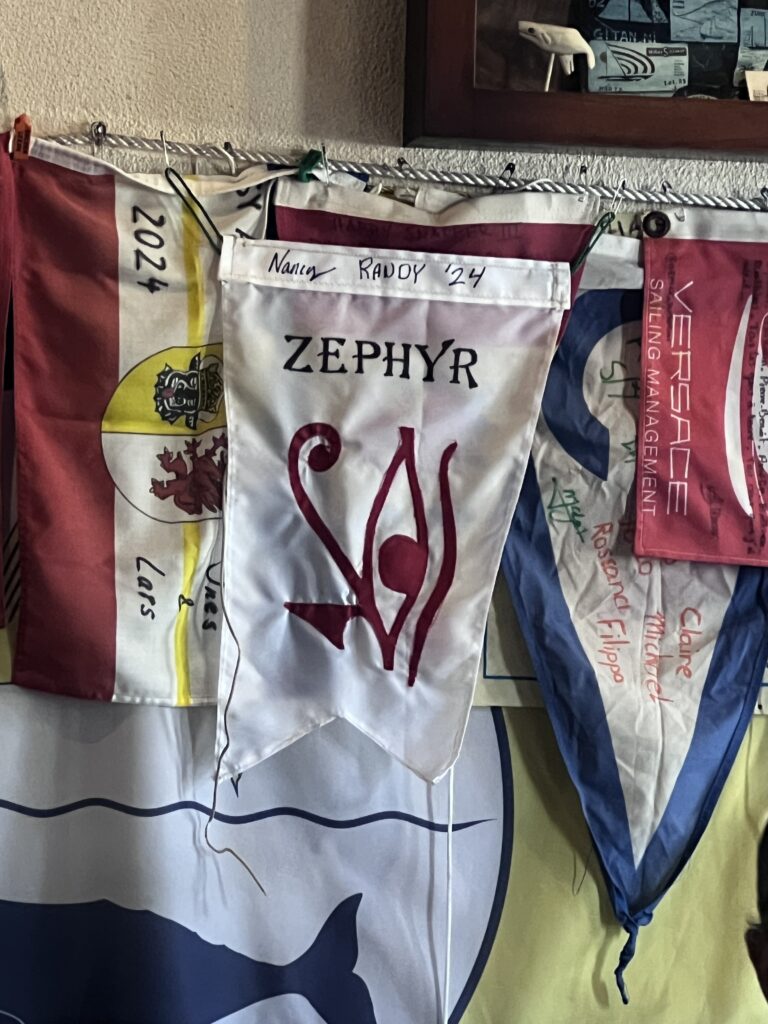
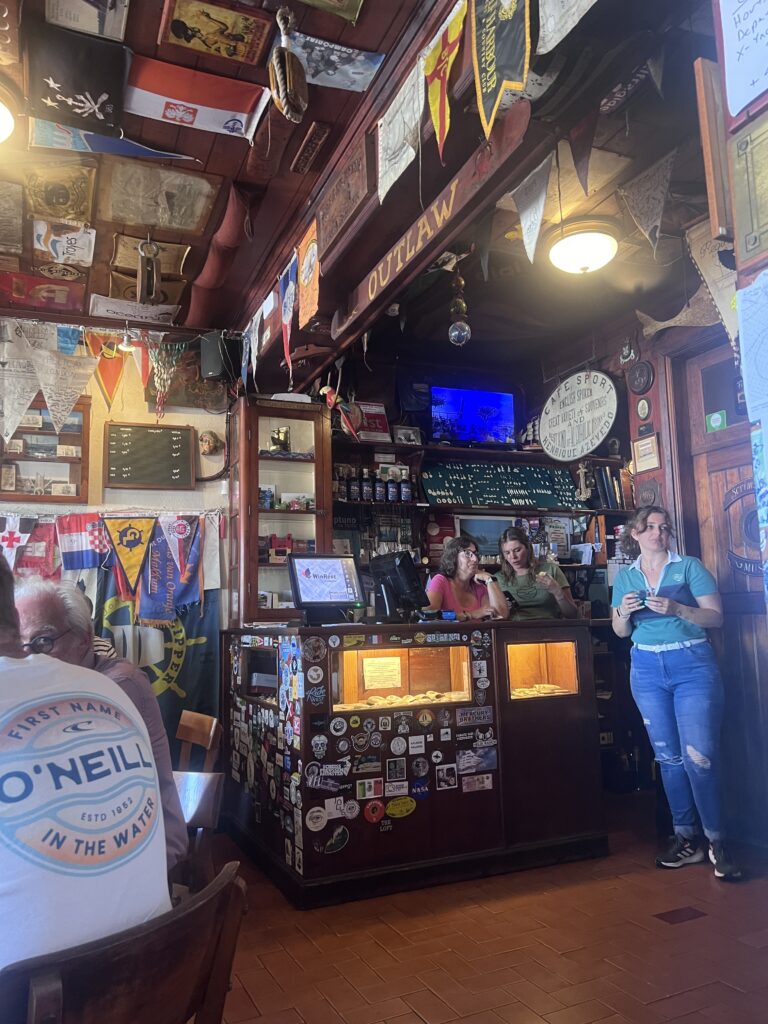
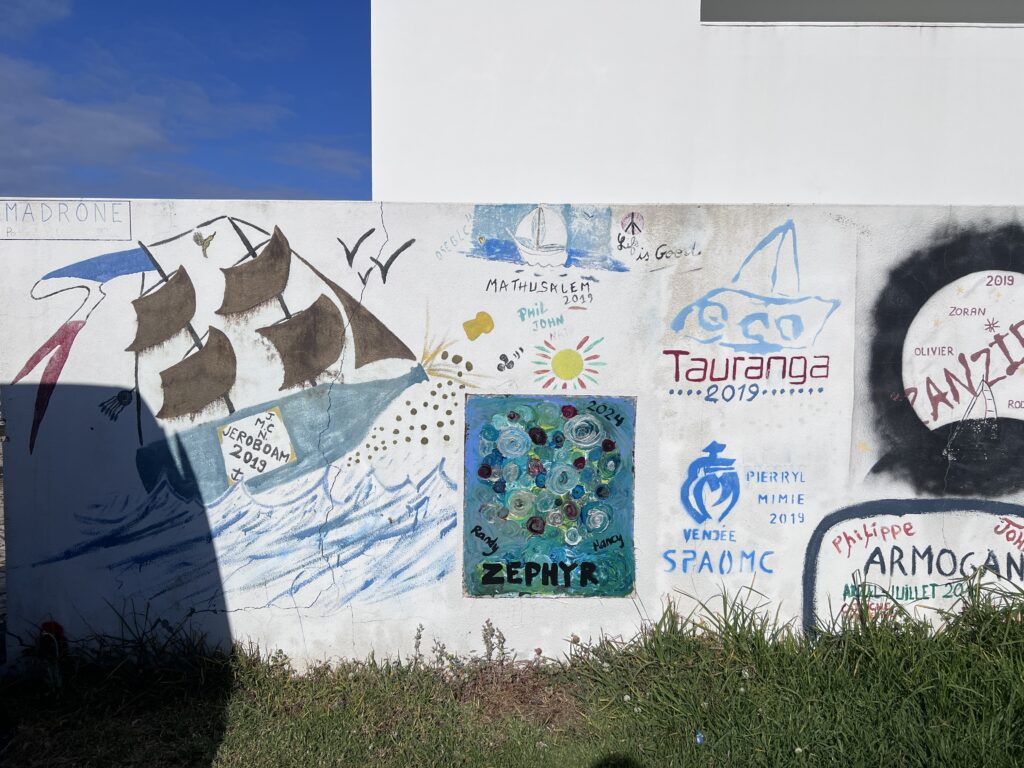
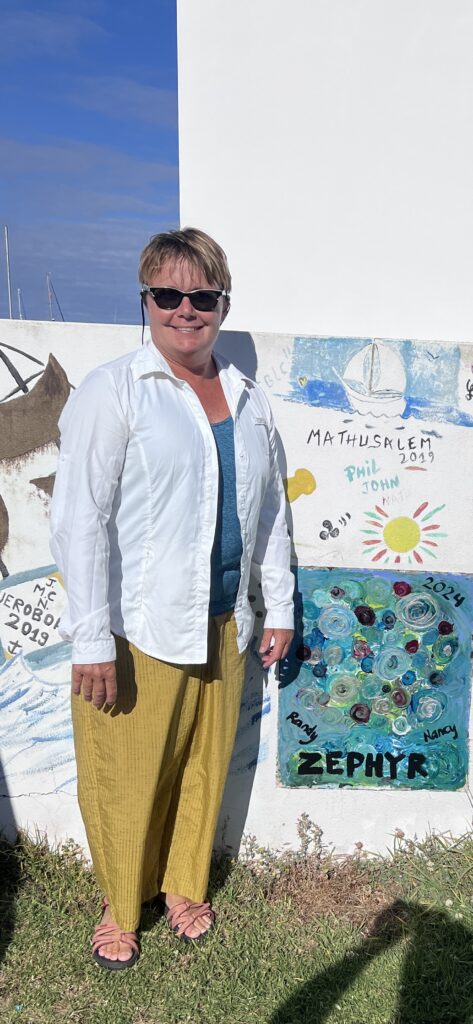
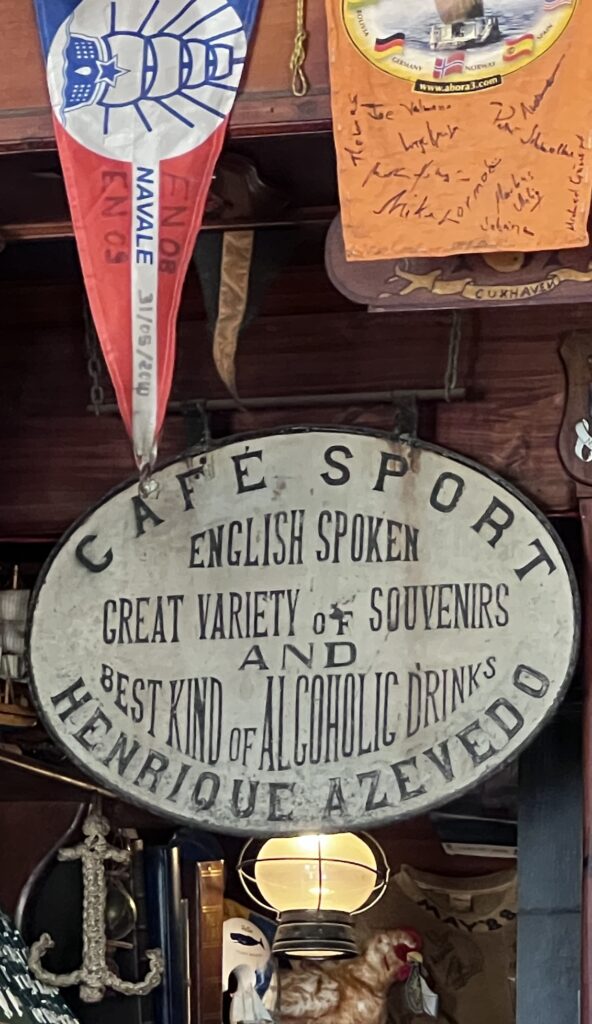

Now that we’ve taken care of business, let’s get to the fun stuff. We went out whaling! We rowed out in the whale boat, grabbed a harpoon and speared us a Sperm whale. Okay, so we sat in a 30′ RIB and took pictures of a Sperm whale and her calf. That is not as romantic but much more modern, and less smelly. We also saw dolphins, of course, and two different pods of Sei whales traveling on their migratory path to the south. We were surprised by a pod of Beaked whales on the surface. They are migratory and spend 90% of their time under water, so to actually get a glimpse is rare, they say. The Sperm whales are a large group of females and calves, some 1300 who are permanent residents of the Azores. They feed on the Giant Squid that haunt the subaquatic cliffs at 1200 meters. Imagine the great battles between these two leviathans of the deep. There are many scrimshaw representations of these encounters at Peter’s Scrimshaw Museum.
We rented a car for a drive around Faial, the island which contains Horta. The place is filled with happy cows resting in grassy meadows enjoying the view (for a while anyway. The beef at the supermarket is all local. Filet for $3.50/lb anyone?) We drove up a great dirt road to the top of the volcano, the switchbacks were hairy, I wish I had a rally car, but the little Renault had a tough time, even in 1st gear. The caldera was amazing to see. We drove back down on a smooth paved road for comfort and went to the west side of the island where, in 1957, a new volcano erupted and formed an extension of Faial. It was predominantly an ash eruption, with no magma flow and it covered the nearby lighthouse buildings to the second floor windows. Quite an eerie, otherworldly sight. The difference between the lush green old hillsides and the new gray peak is striking.
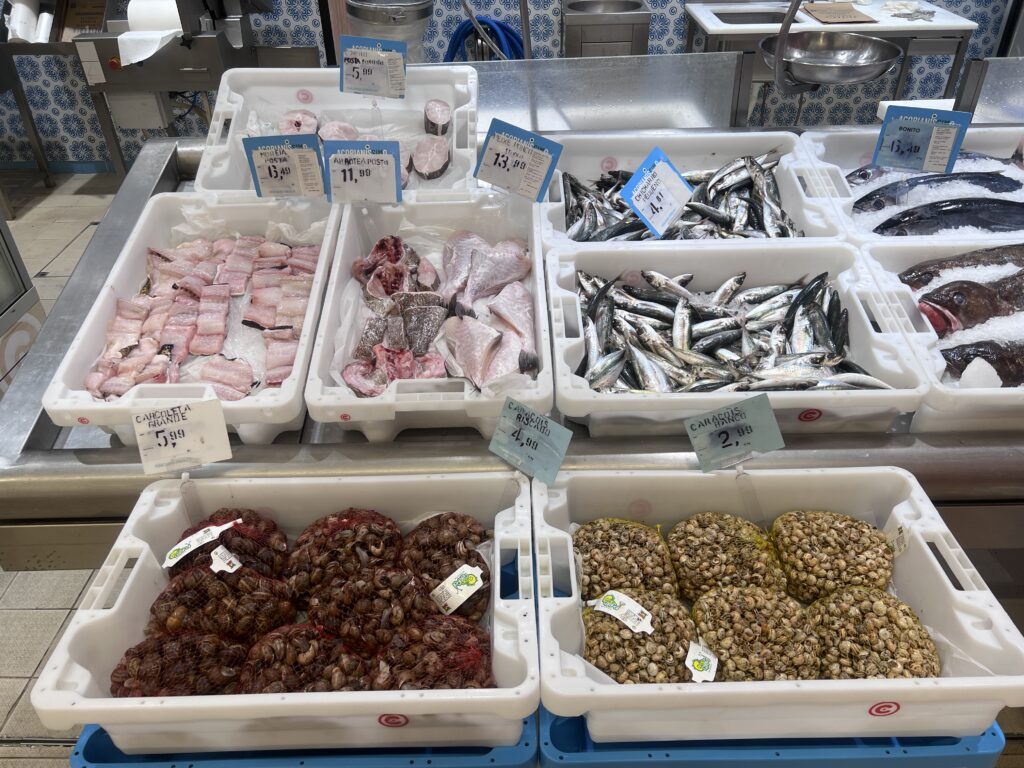
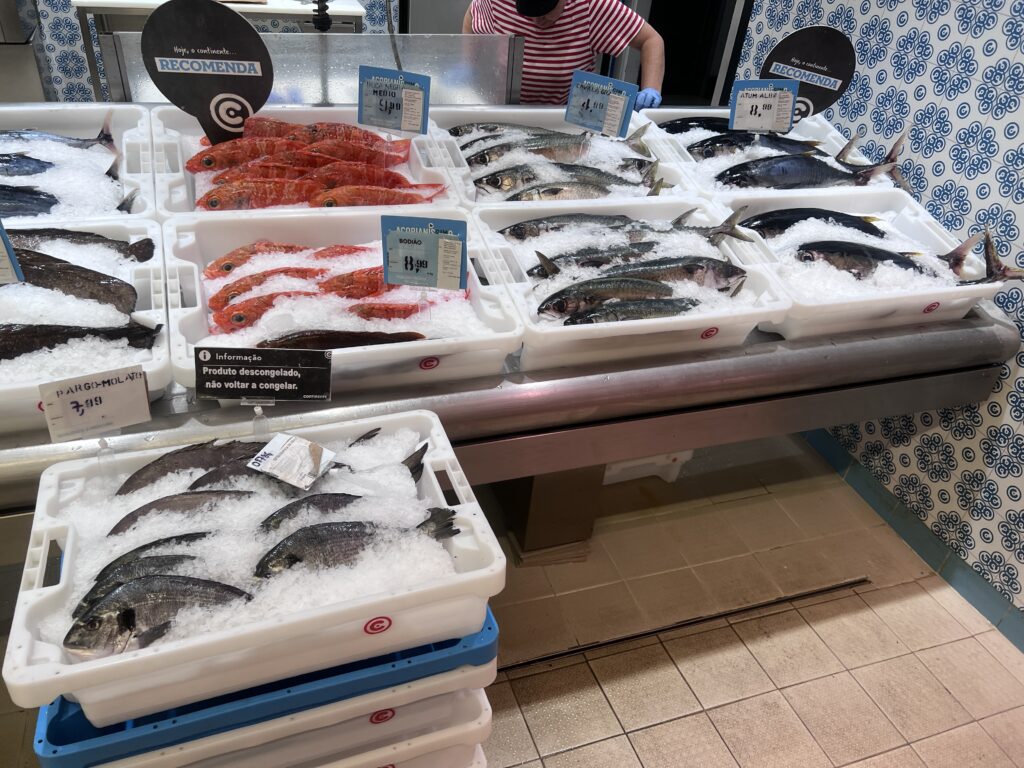
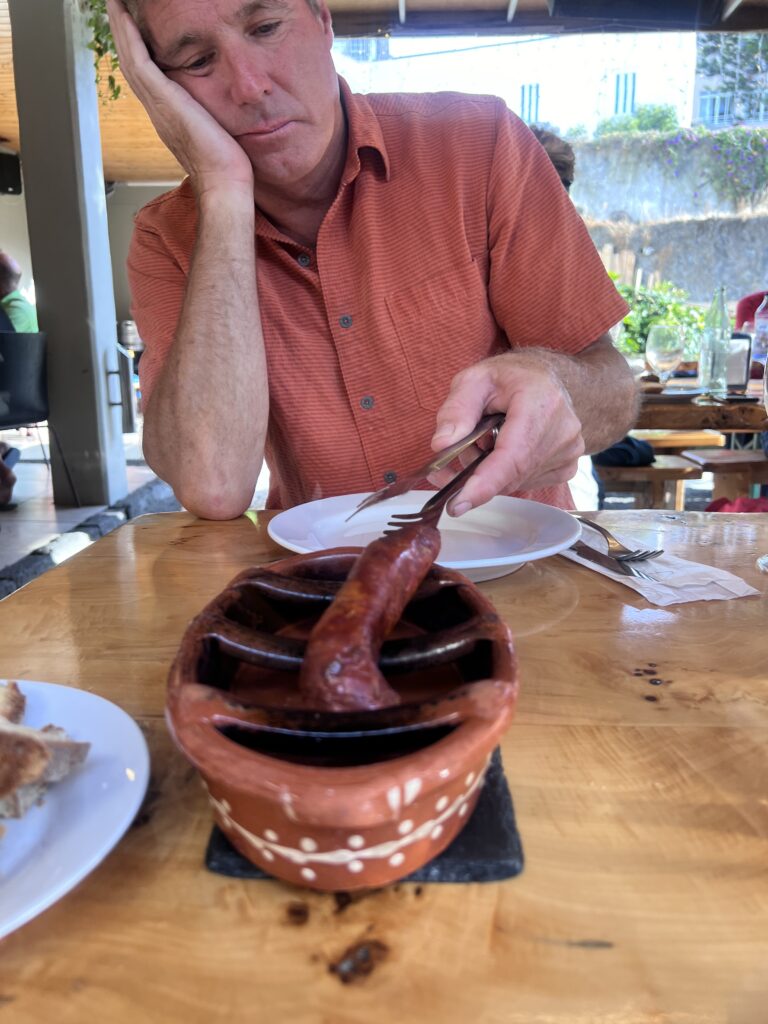
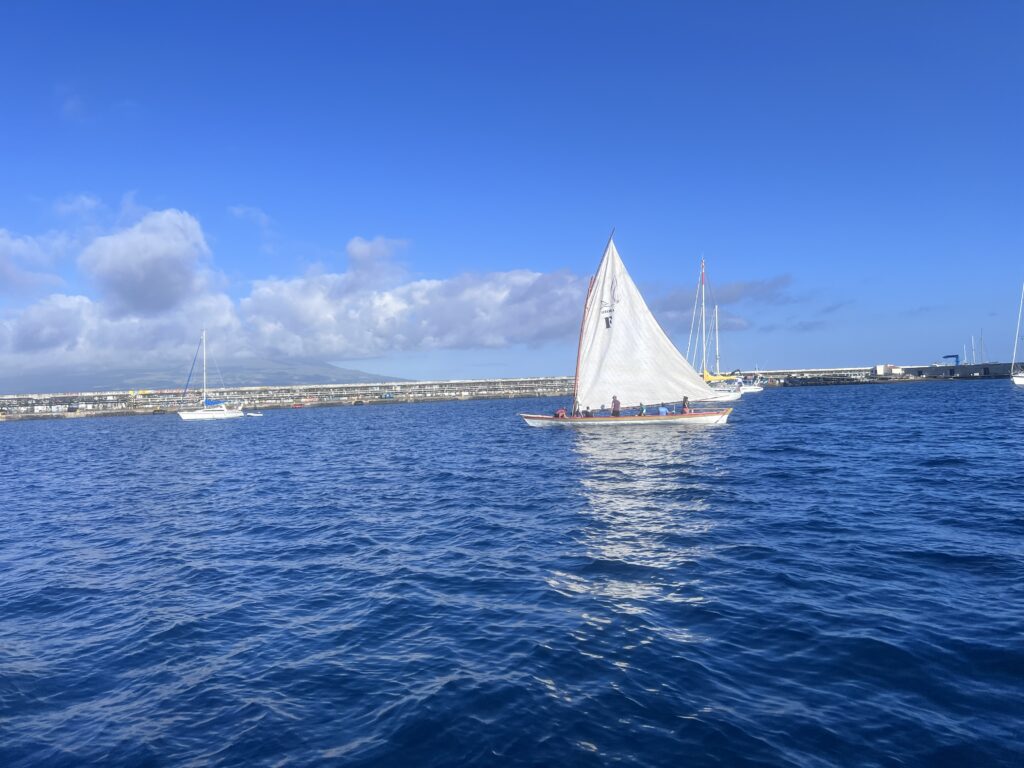
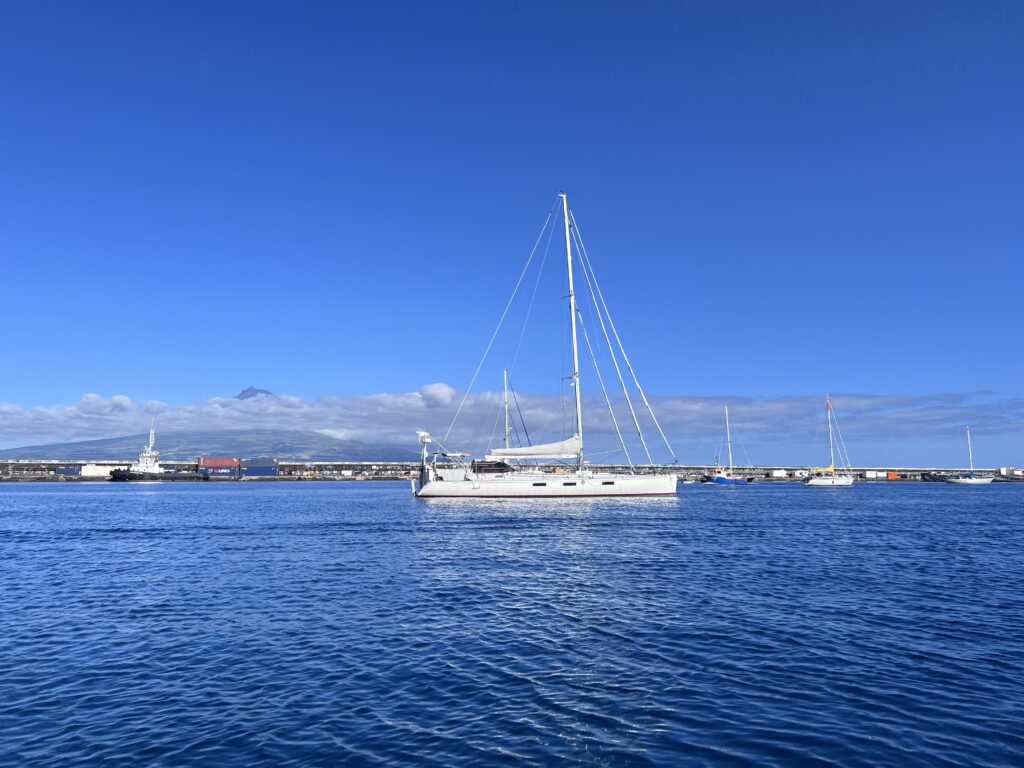
Another day we went over to the island of Pico, the newest of the chain and took an all day wine and food tour in an old Land Rover with Nuno, our guide and another young German couple. We had great fun. Pico is covered with pastures on its upper hillsides, but near the sea it is barren volcanic rock. This is perfect terrain for growing wine grapes, but first the rocks must be cleared. The island is laced with thousands of miles of stone walls all to protect the vines from the sea wind. They grow the vines on the ground for protection and each row of vines is separated by a wall. It is fantastic to imagine the labor involved.
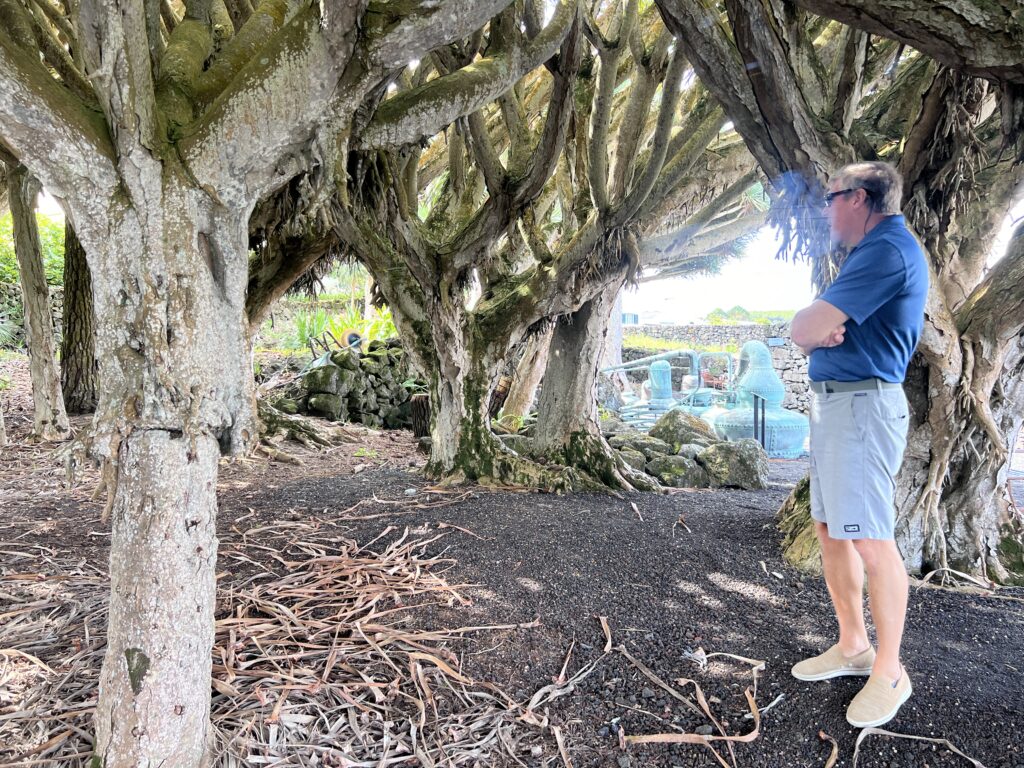
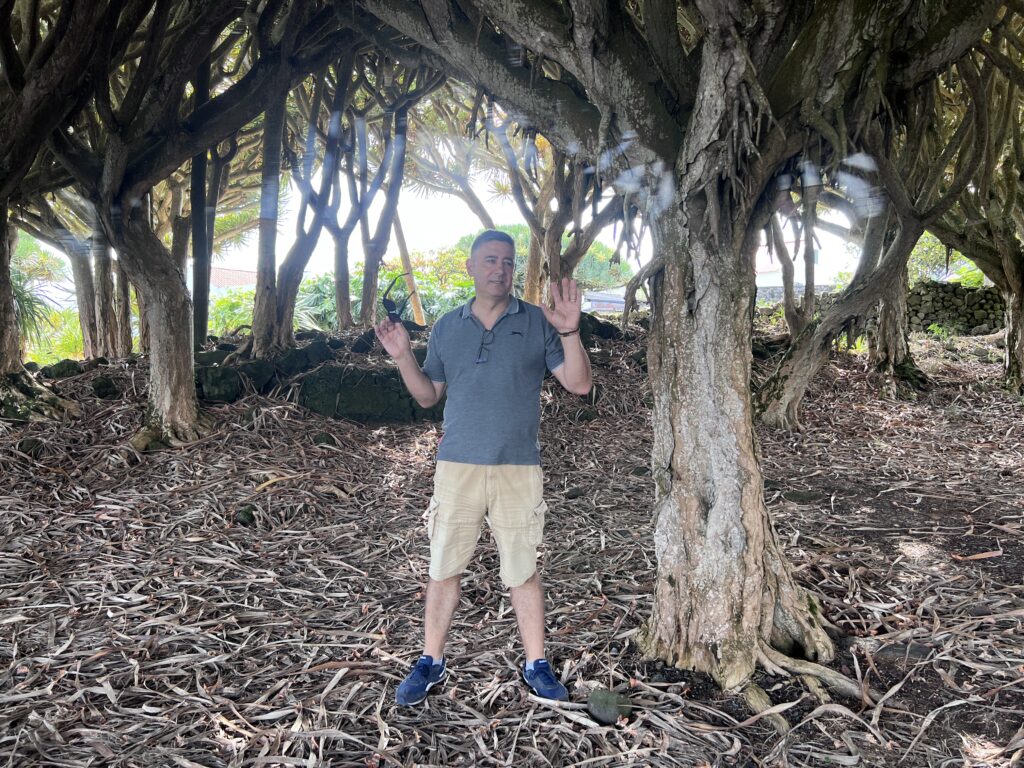
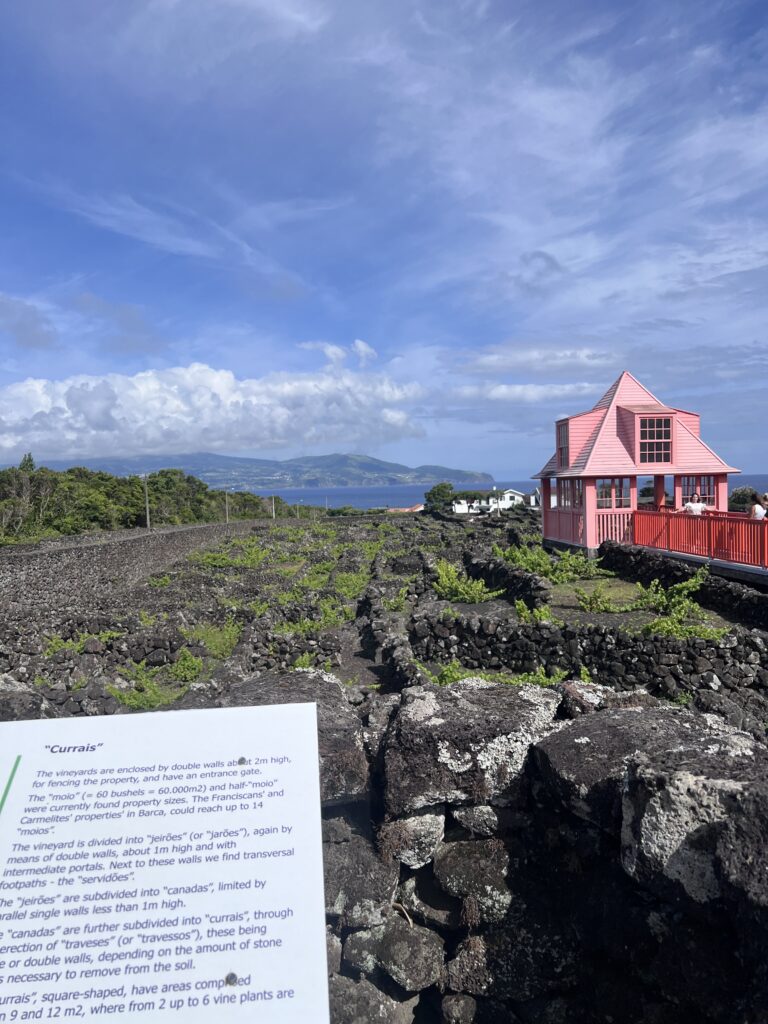
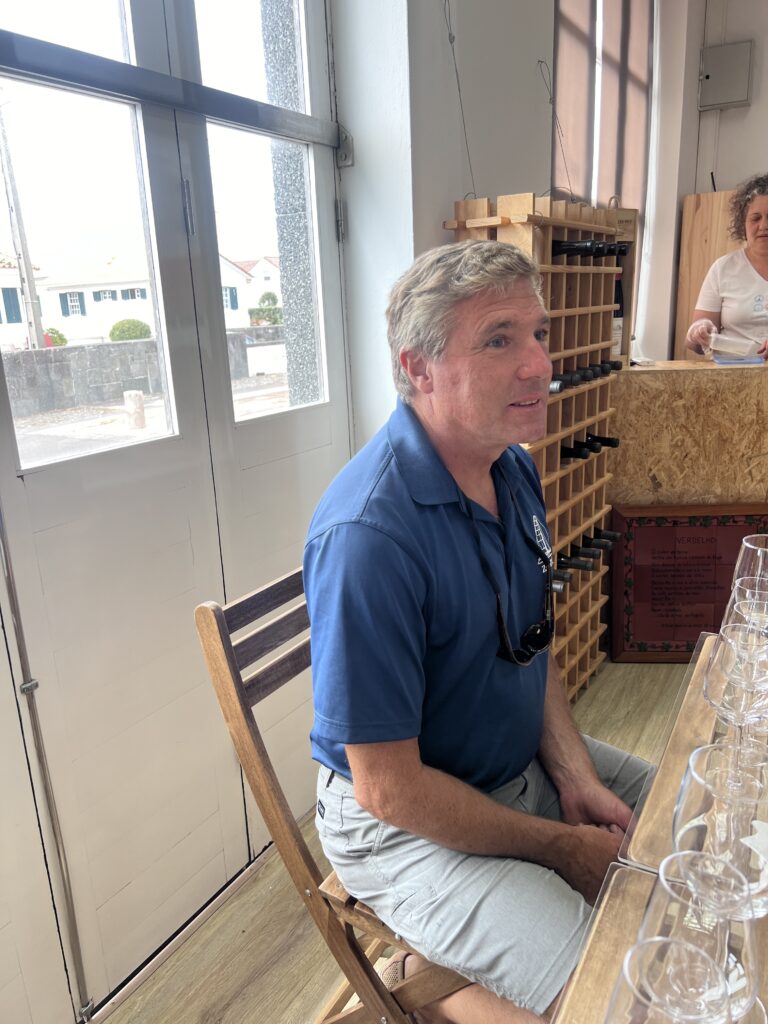
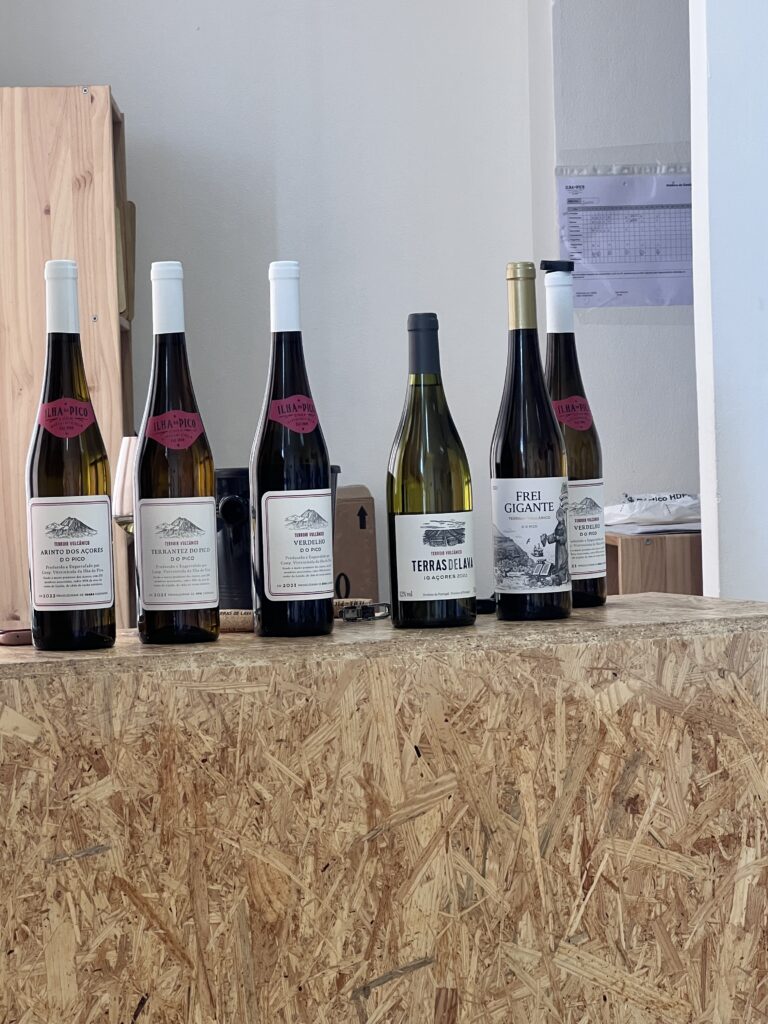
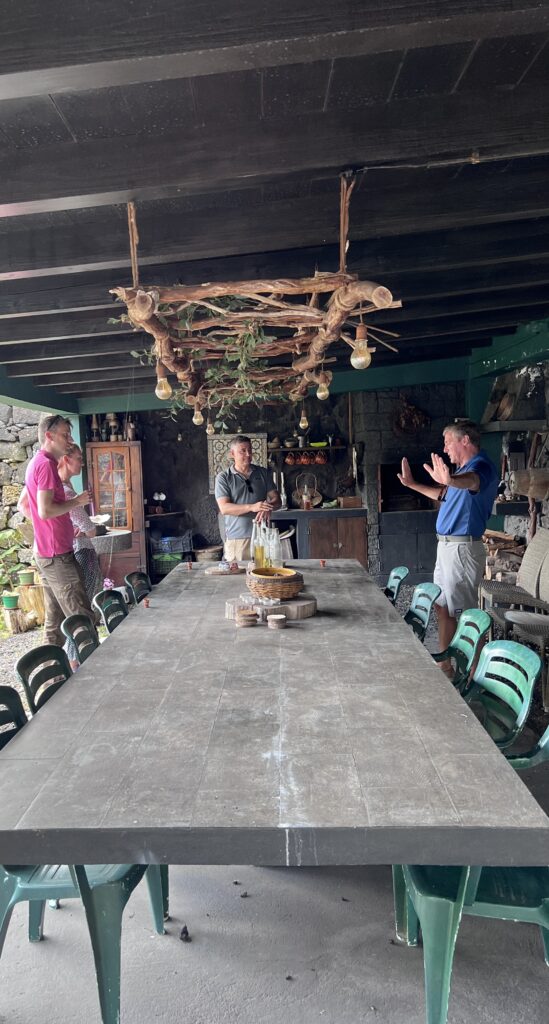
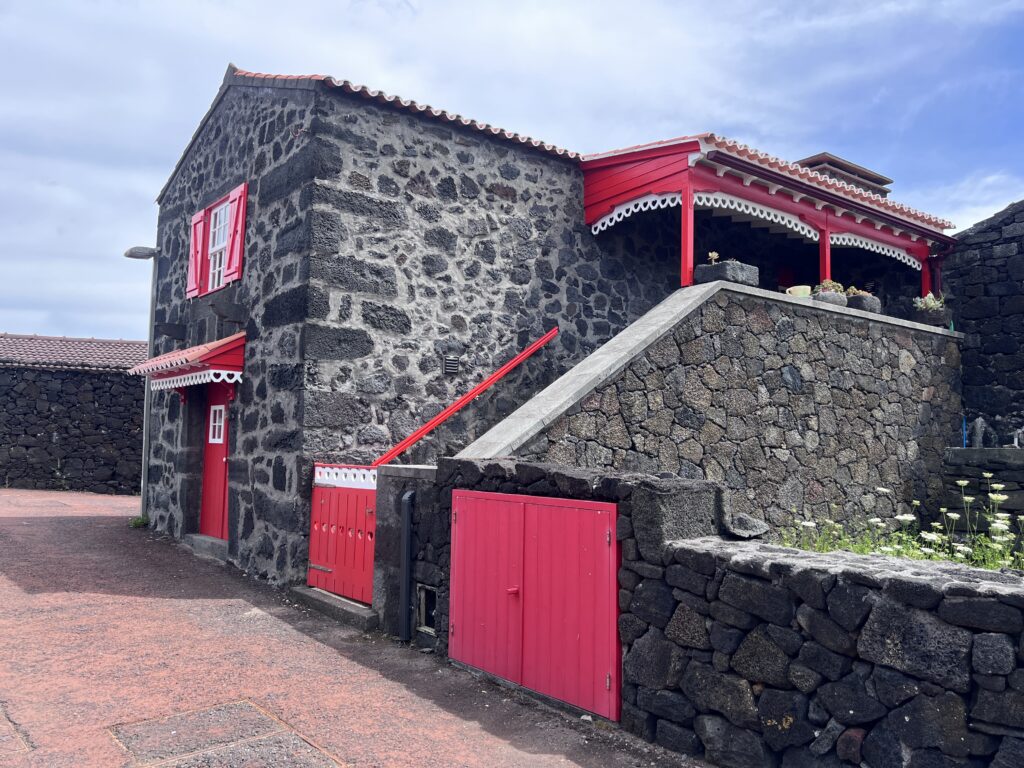
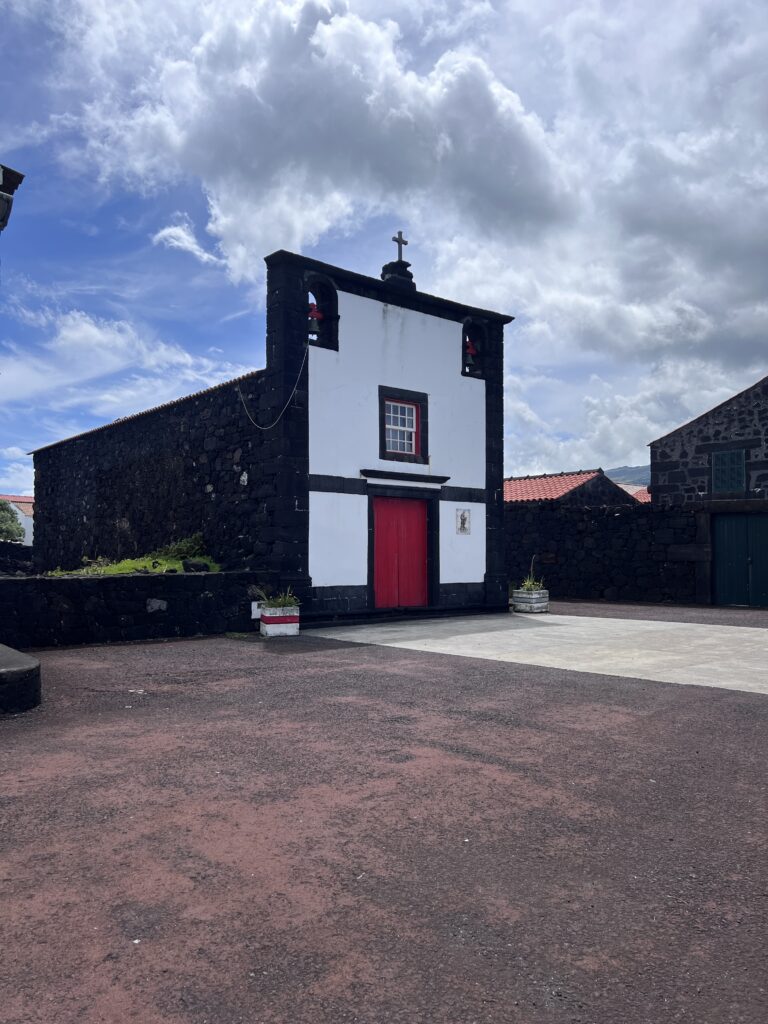
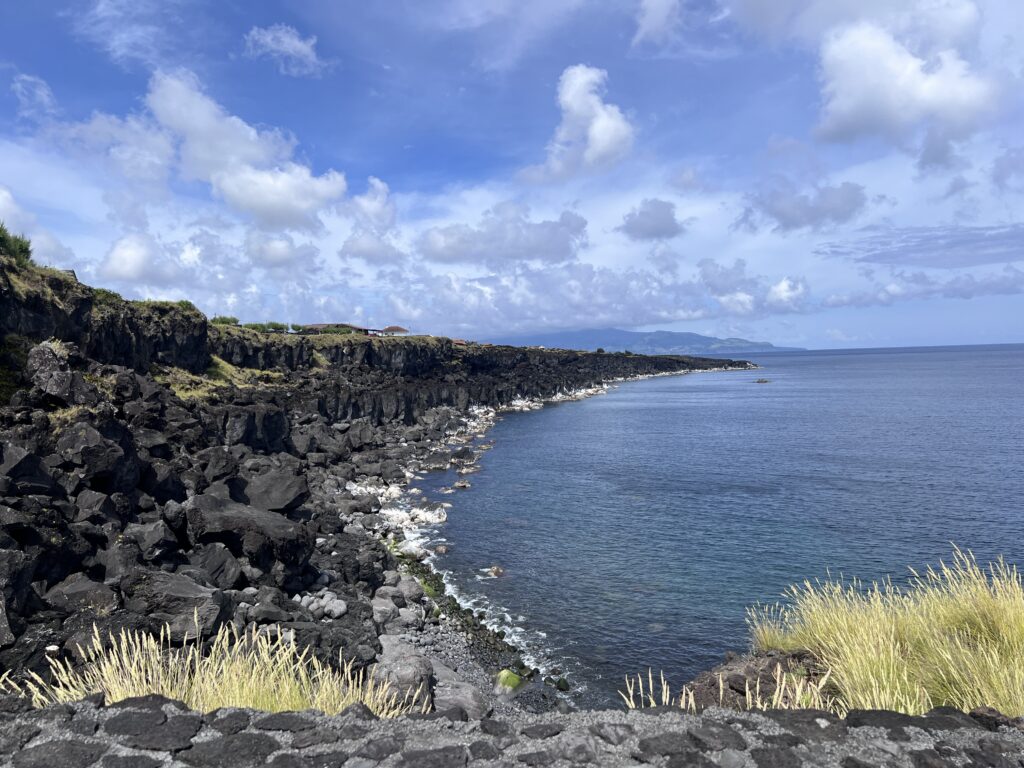
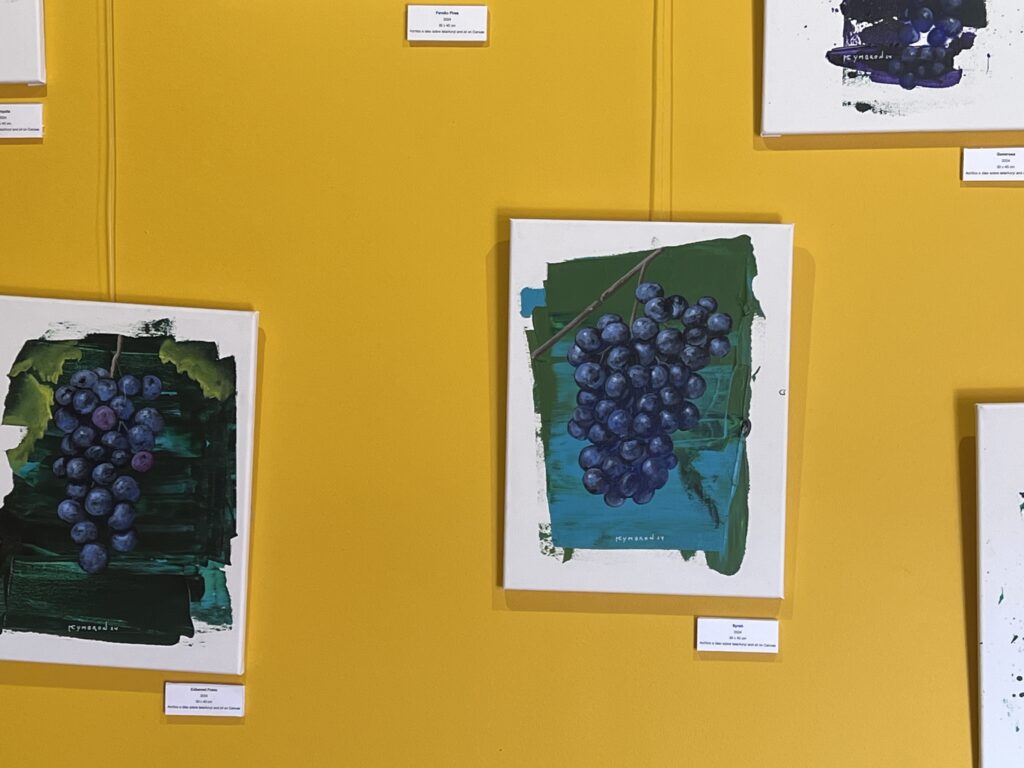
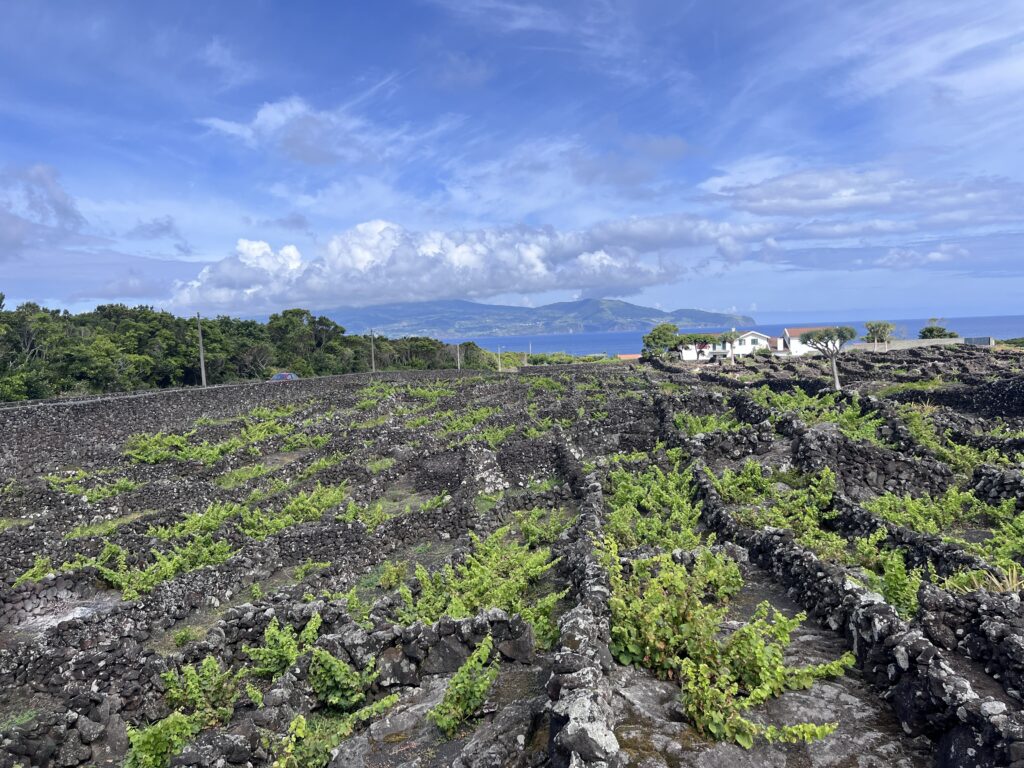
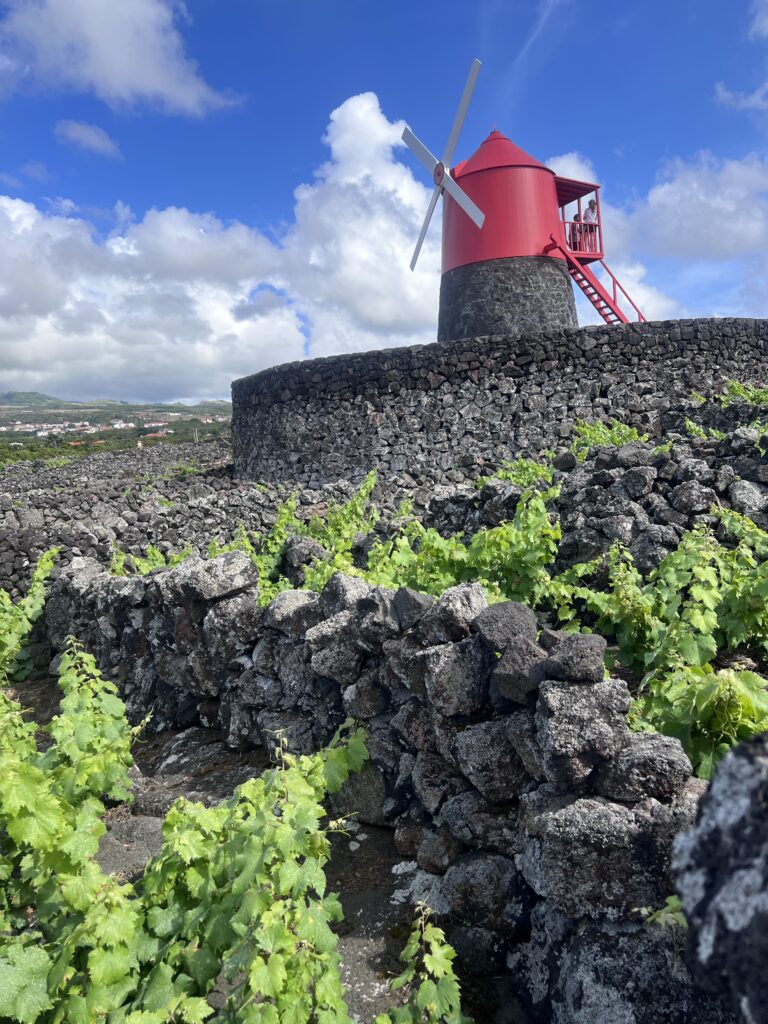
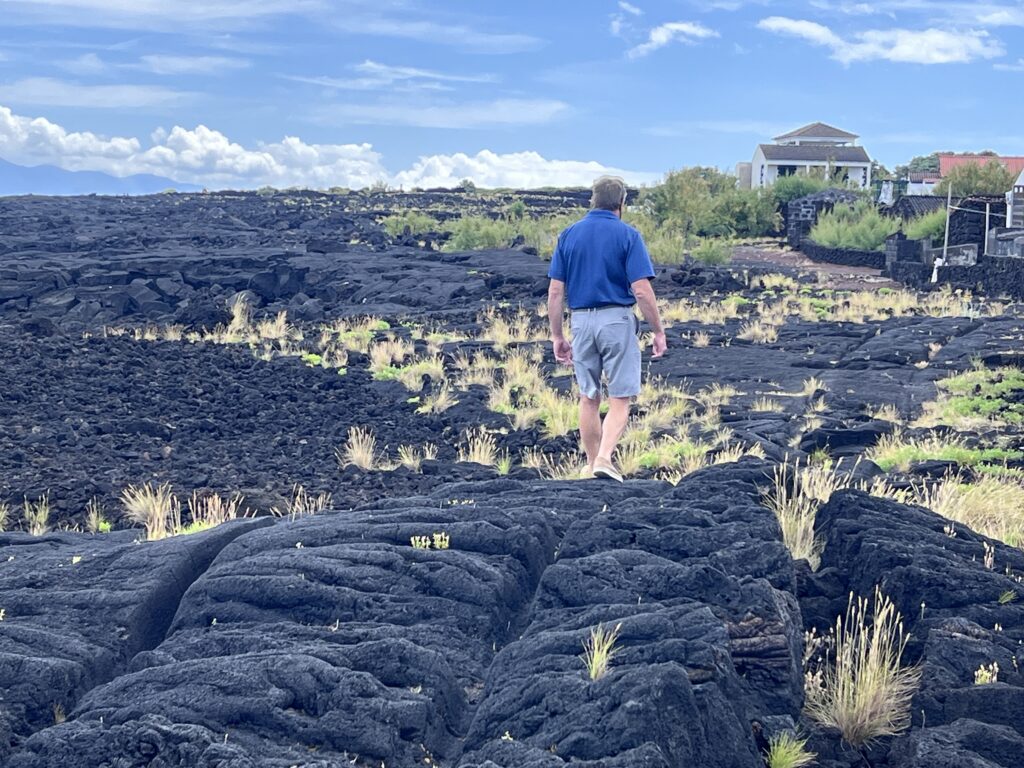
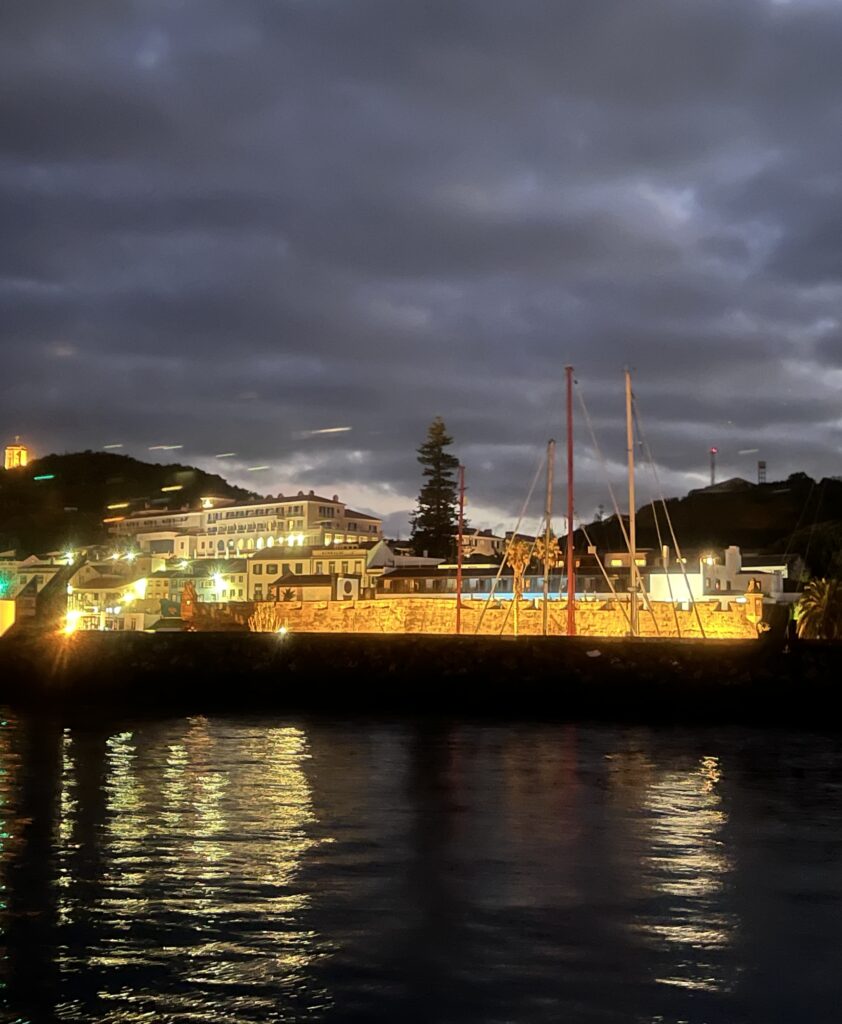
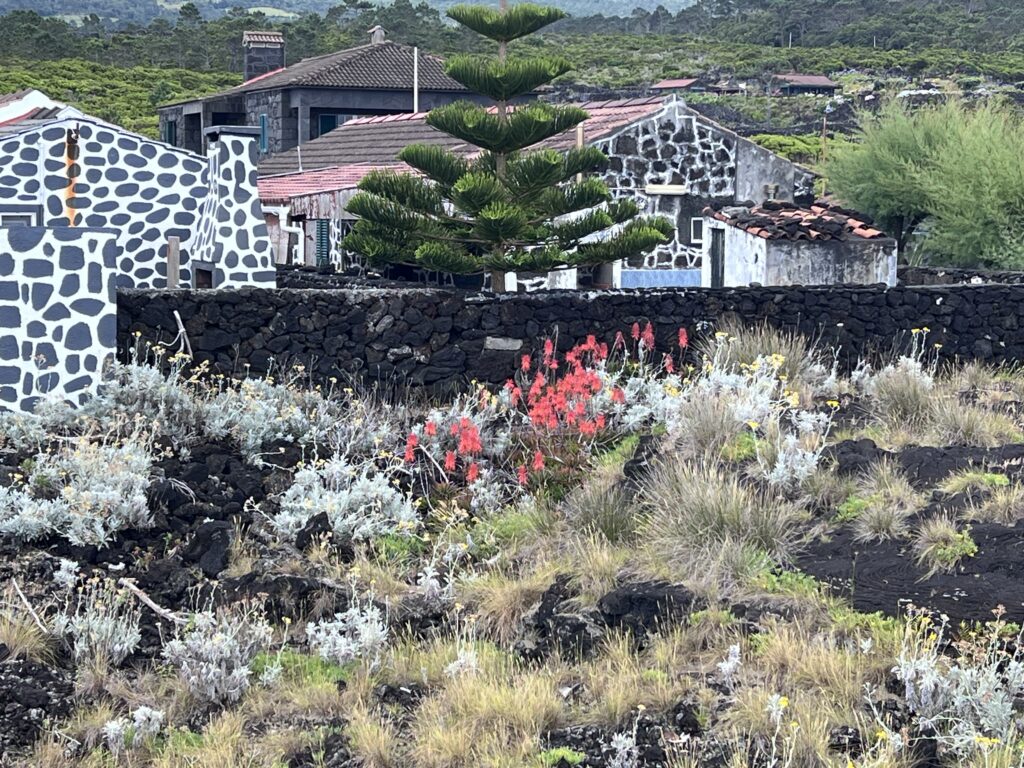
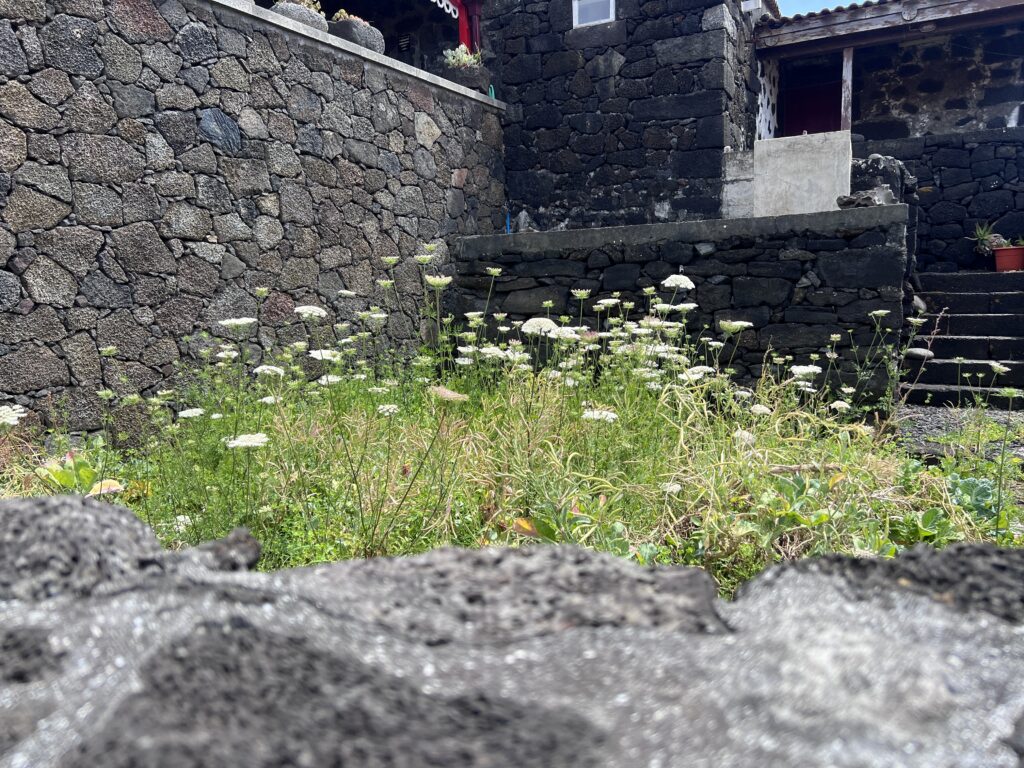
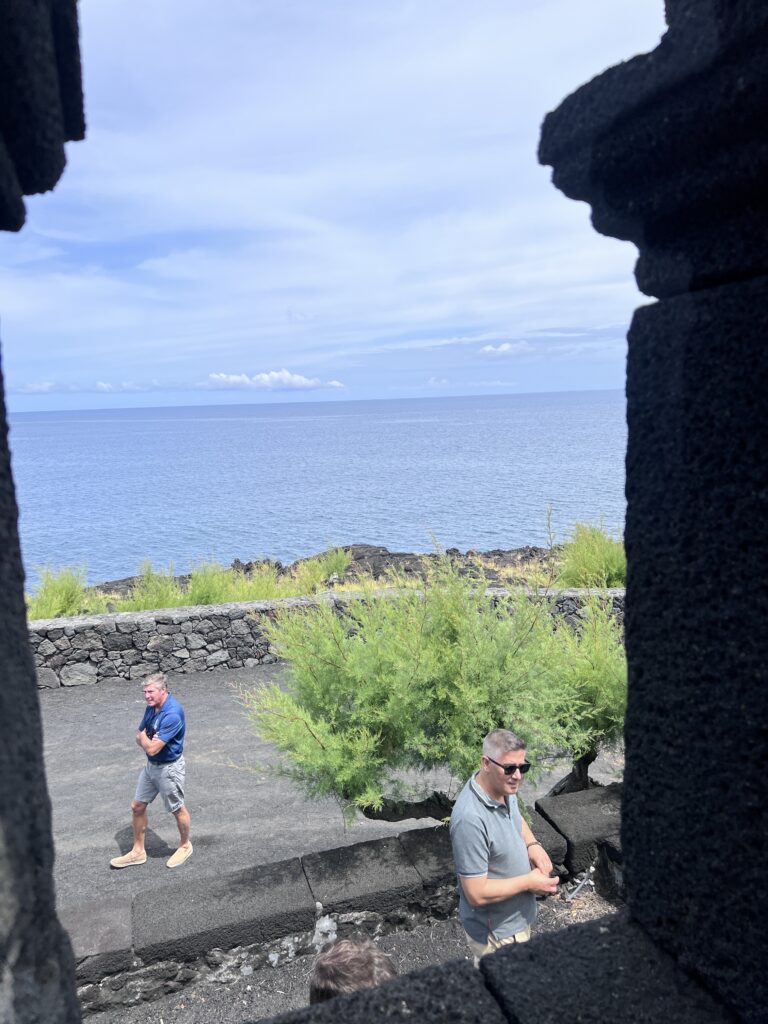

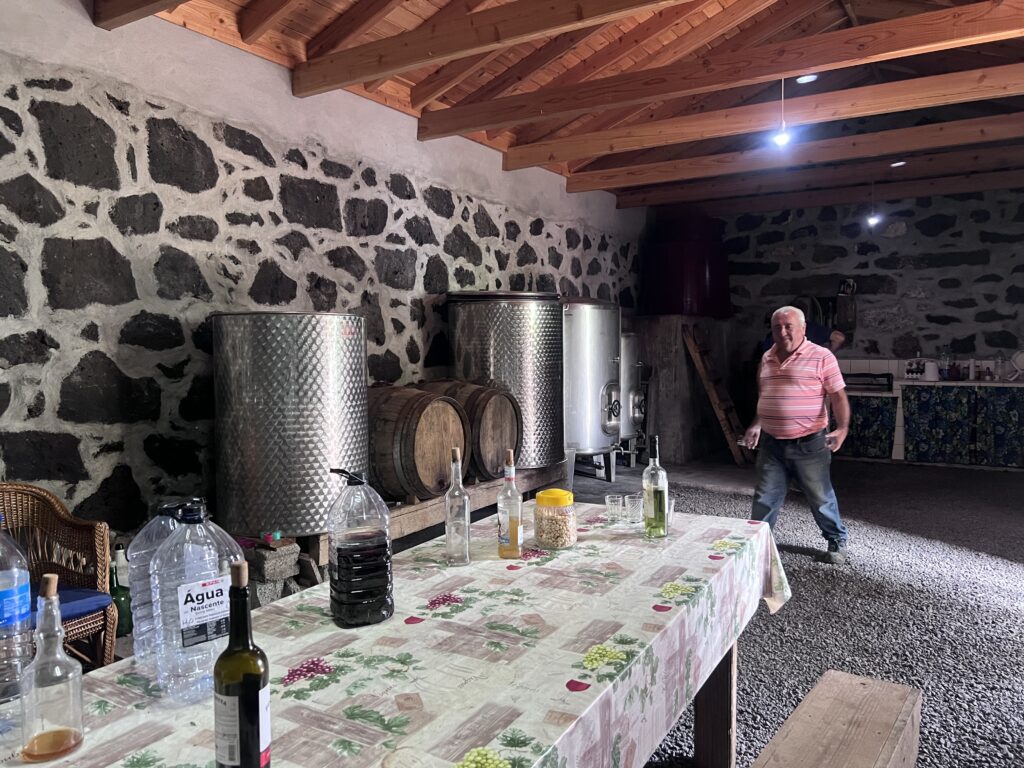

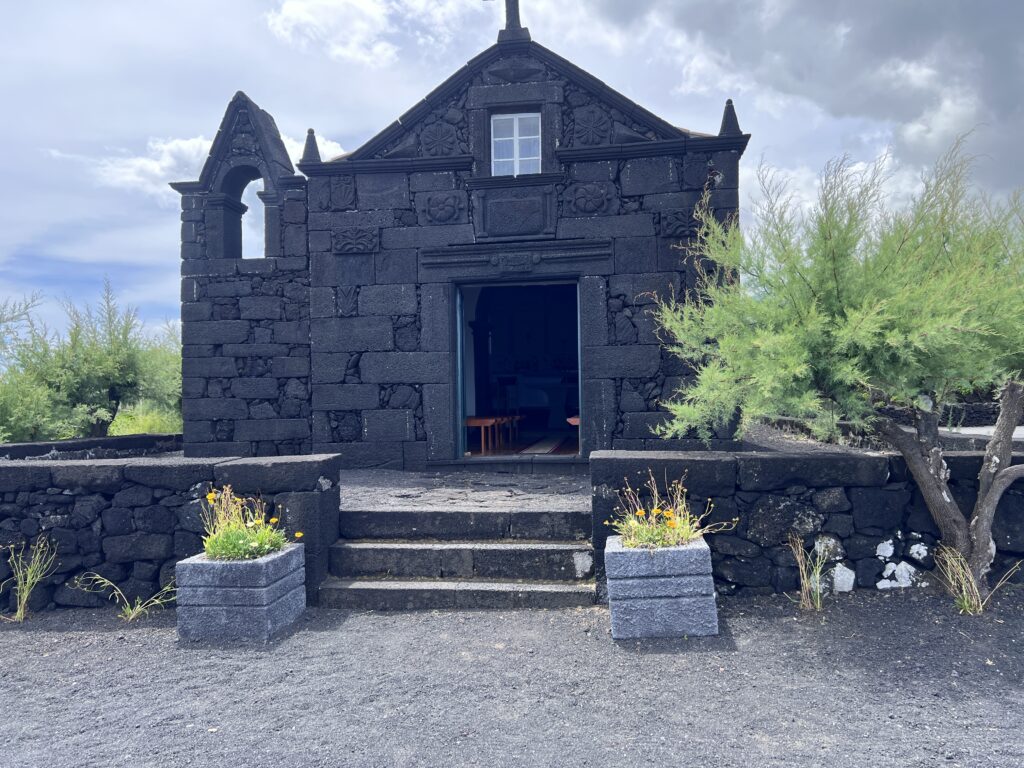
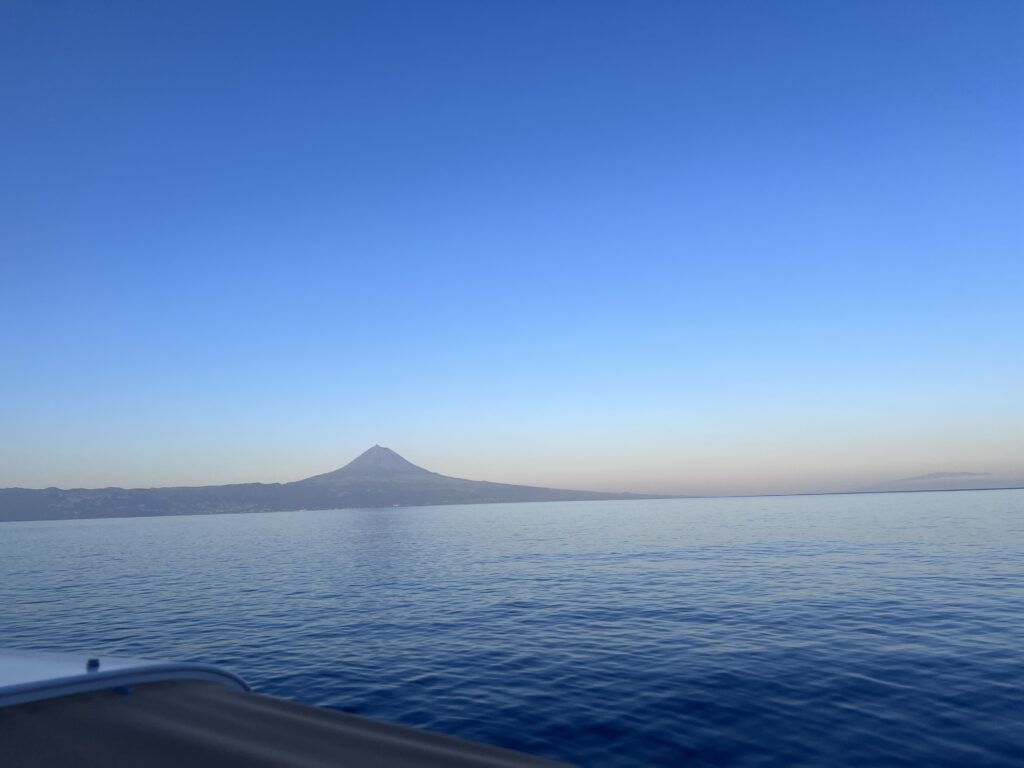
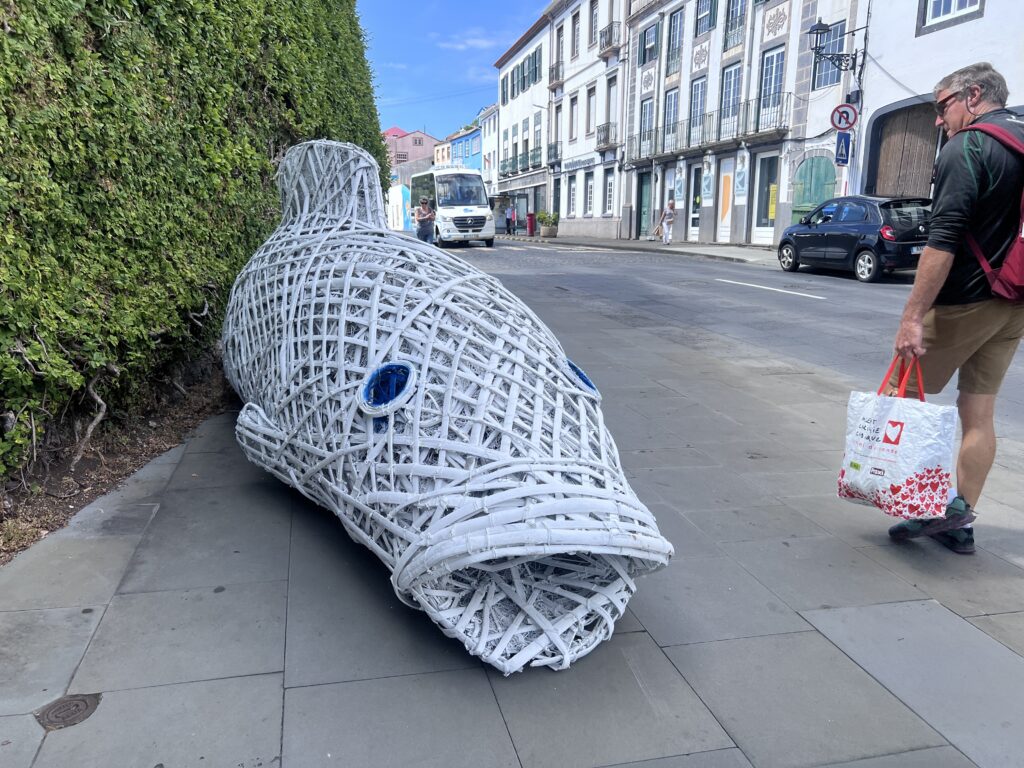
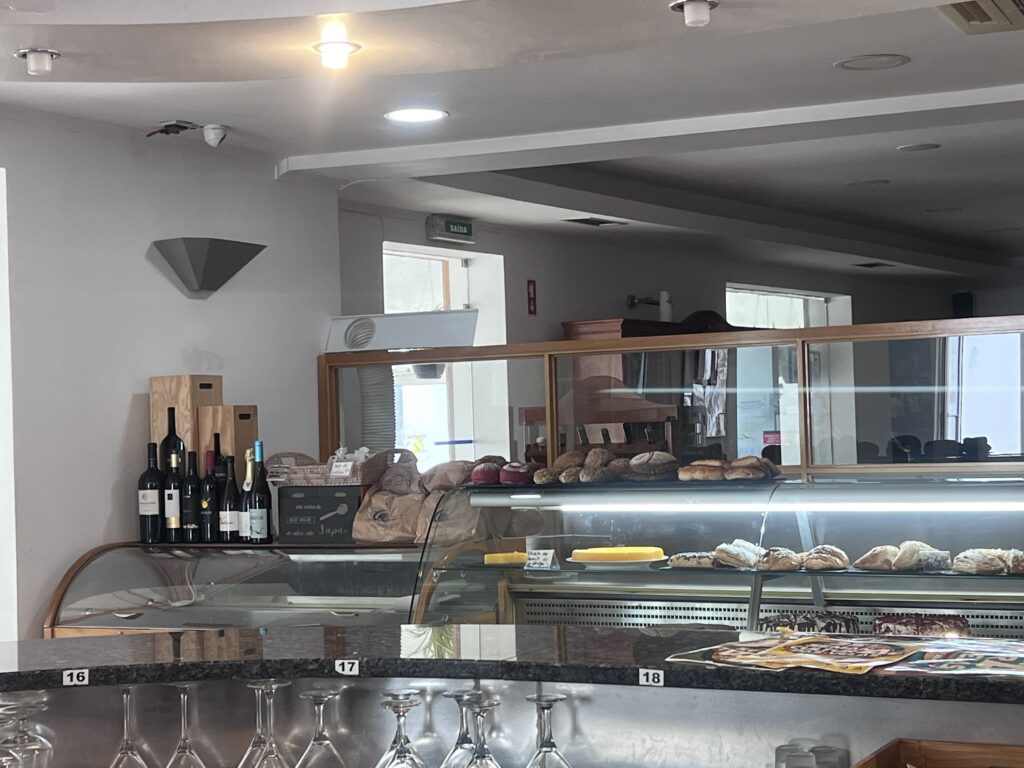
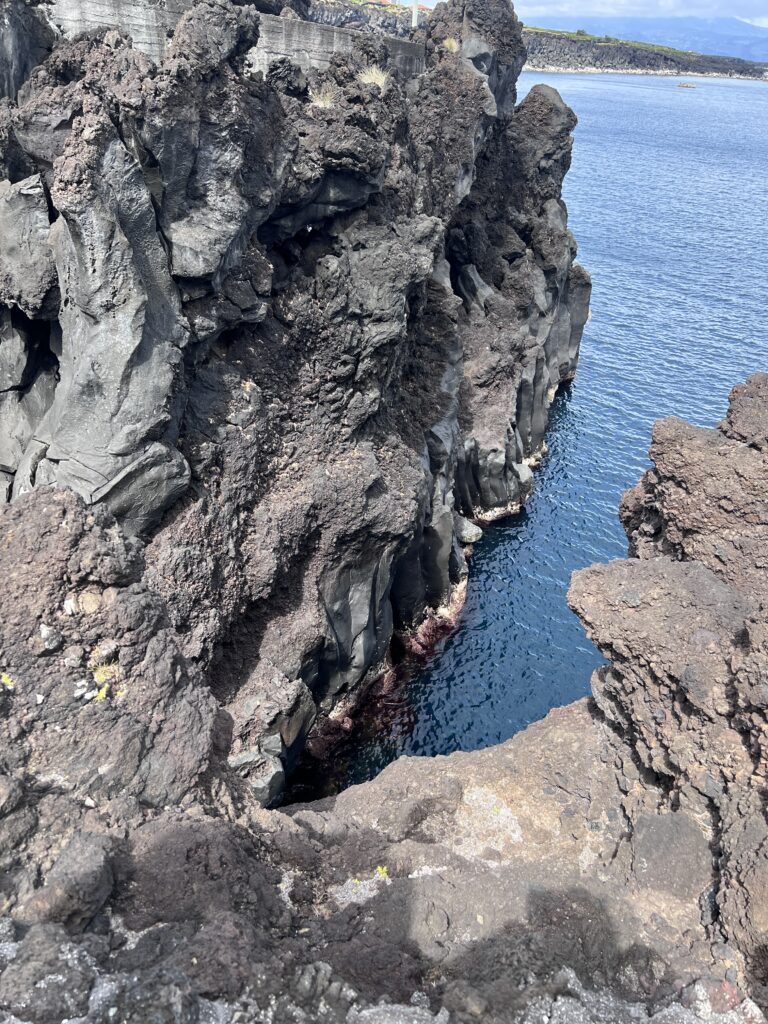
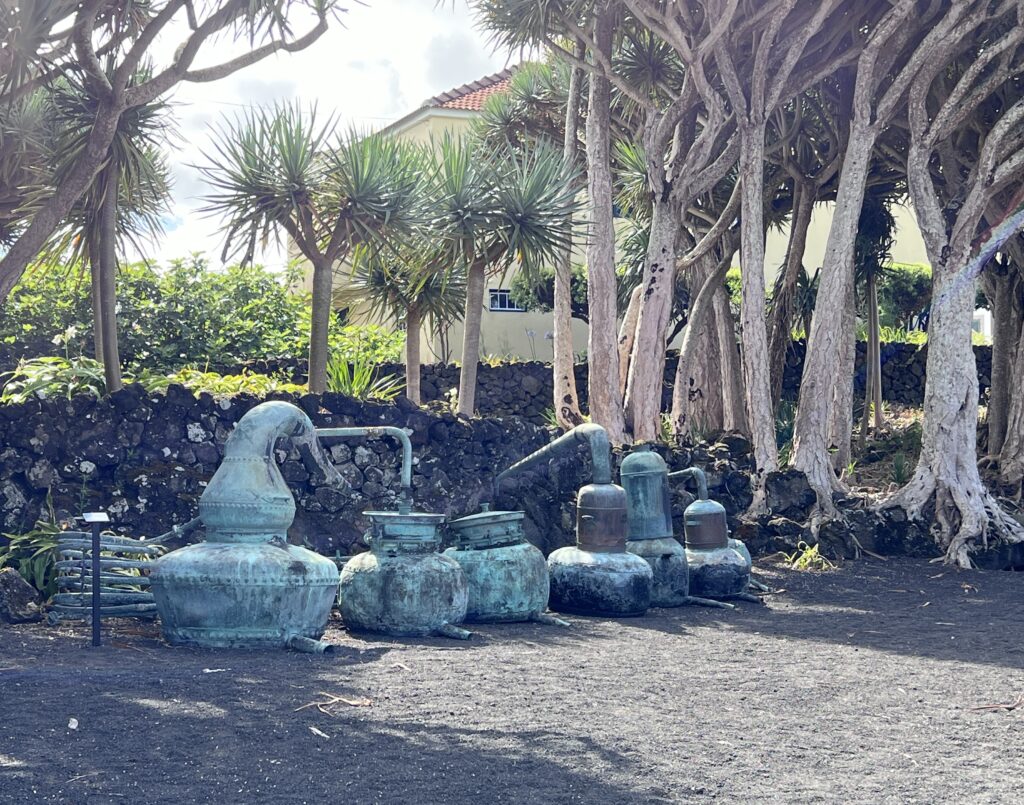
So, the white wine of Pico used to be world famous, but a blight in the 1880’s wiped out most of the native varietal. They began grafting the surviving old stock to new resistant roots from the U.S. and they’re back to producing good wines again. They also make a mean fortified wine, less sweet than sherry and not as syrupy as port. Yummy! We stopped for what Nuno called a snack, for lunch. We were all starving and sat down to a table with some bread and cheese, (the cheese produced in the Azores is creamy and delicious!). We all sighed with disappointment that this “snack” was our lunch. Then came wine, and tureen after tureen of tuna and chorico (sausage) and beans and octopus and meat pies and cheese pies and limpets and steak and dessert, oh my! After lunch we went to the COOP for wine tasting. Good wine, good people, good fun. After saying our goodbyes we sat at a cafe and watched the sunset while waiting for the last ferry of the day to take us home. A perfect day!
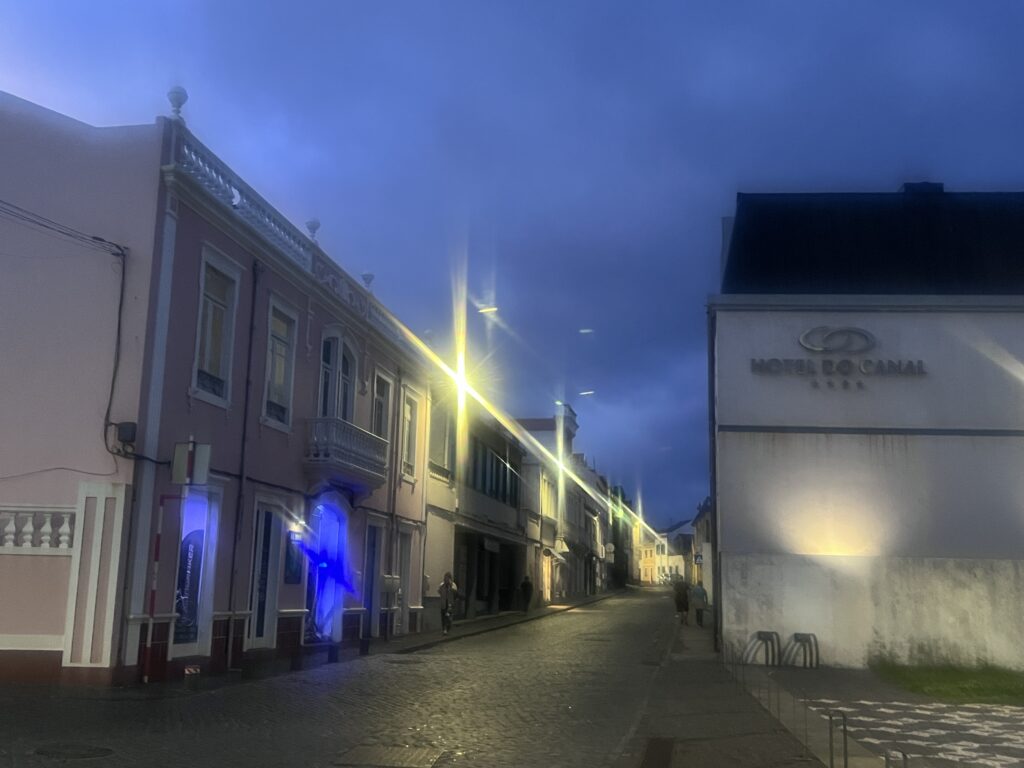
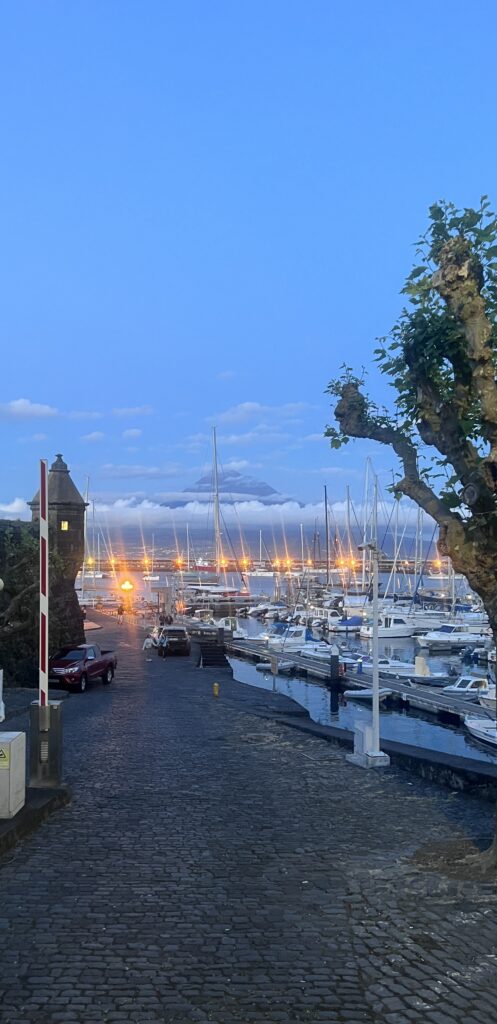
Back at the ranch next day, we ran into George and Verne, two guys we knew from Beaufort who had just arrived on George’s Valiant 42. We toasted them at Peter’s (of course) and shared stories of our adventures getting here. George sailed direct from N.C., so had different tales than us. The joy of this region is that at most restaurants the tables are large so you end up sharing space, which leads (if you’re like me) to conversation. We’ve laughed with French boys who were crew on a trading schooner enroute to Plymouth from Colombia, who usually work on yachts and complained about the callouses they earned hauling the lines of an old gaffer. We shared a crossword, in Dutch, with two gals on a holiday from Amsterdam. Even some expats from England and the U.S. entertained us over dinner and drinks at this great place called Oceanic, a restored 19th century relic with patio seating where you watch the lady cook your food on a giant stone grille.
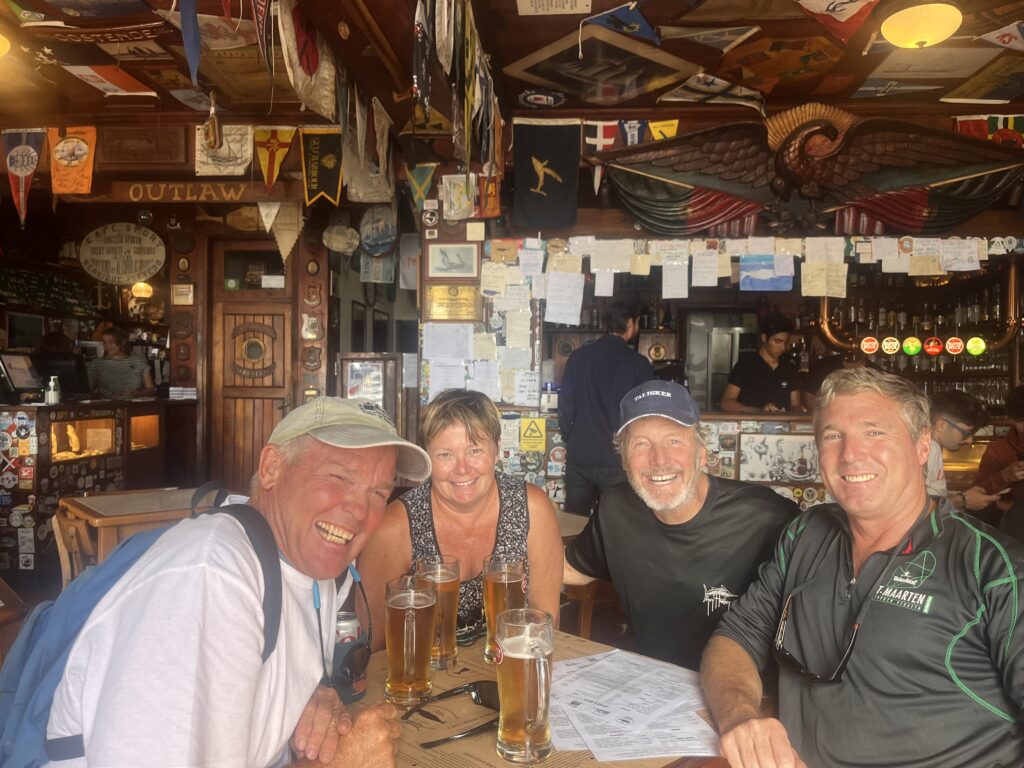
So now we’re anchored in front of the town of Velas on the island of Sao Jorge. It is a bit rolly at times but it is a truly beautiful spot. We’re anchored in 50′ of water and I can see the anchor on the bottom, securely hooked. Behind us are cliffs that tower some 200′ covered in trees and lichen covered rocks. Across the water, rising to 7713′ is the volcano on Pico often ringed with clouds. To the north is the quiet town of Velas which crawls up the hillside from the harbor in colors of white, red and yellow. We hear the church bells chime on the hour and when calling the faithful.

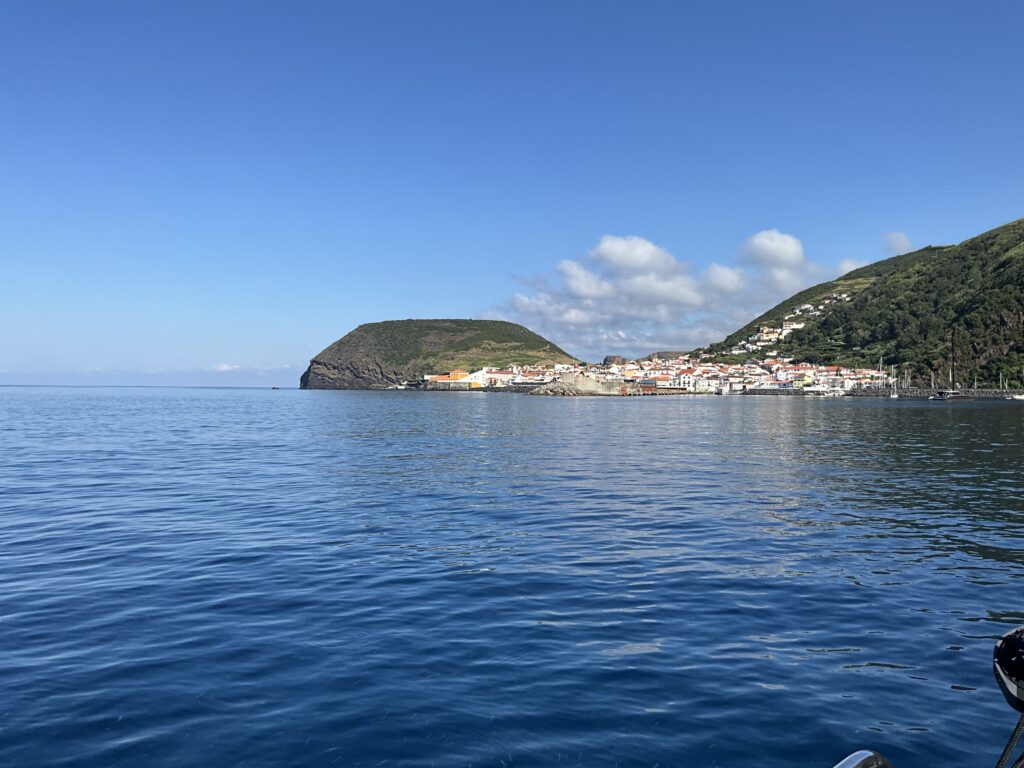
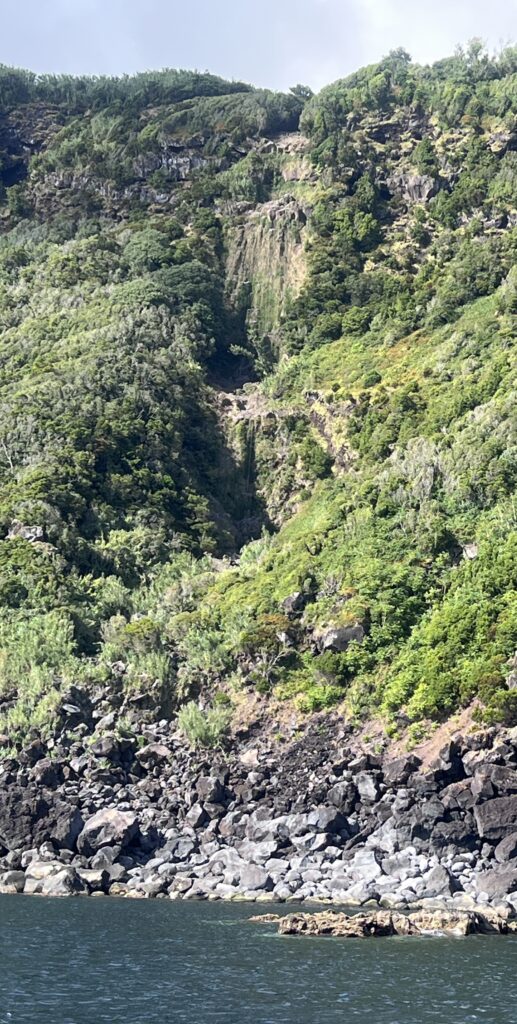
On the hillside are thousands of migratory birds who spend the summers here. They are called Cagarros or Cory’s Shearwater. They don’t start their call until sunset and last for a few hours, but it is the strangest sound I’ve ever heard. Like Ow Ow Ow Blecch, called through a kazoo. Very nasally and sharp. The hillside sounds much like summer trees filled with cicadas; a rolling hum that is both mesmerizing and annoying. Look it up on the Googler.
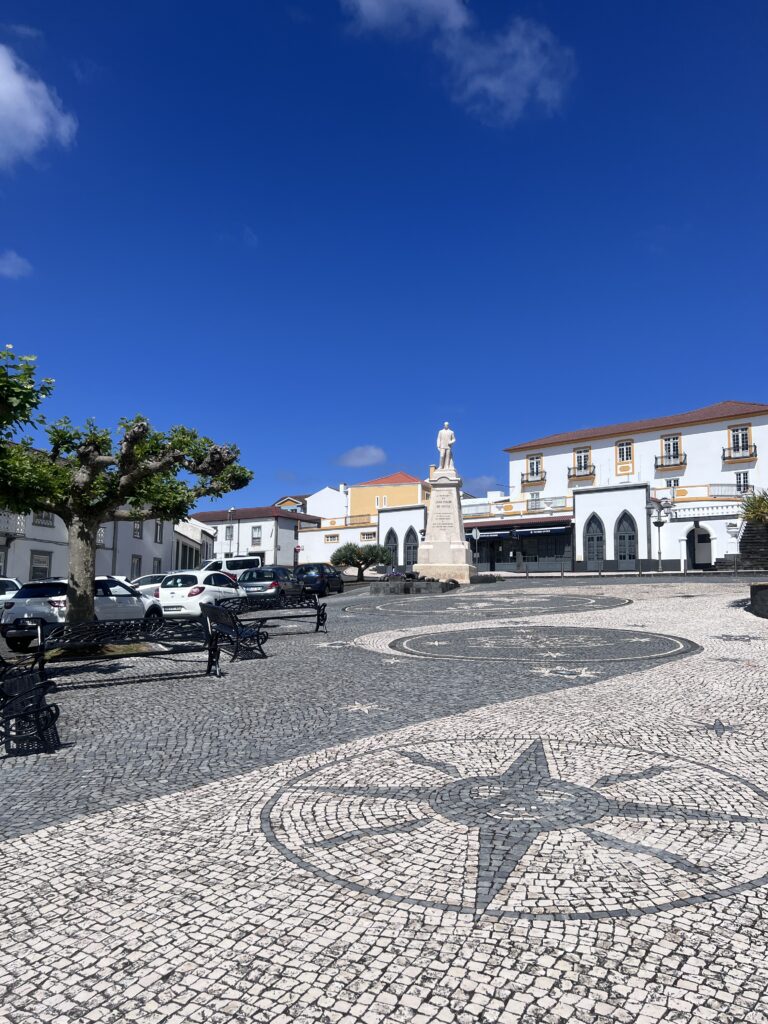
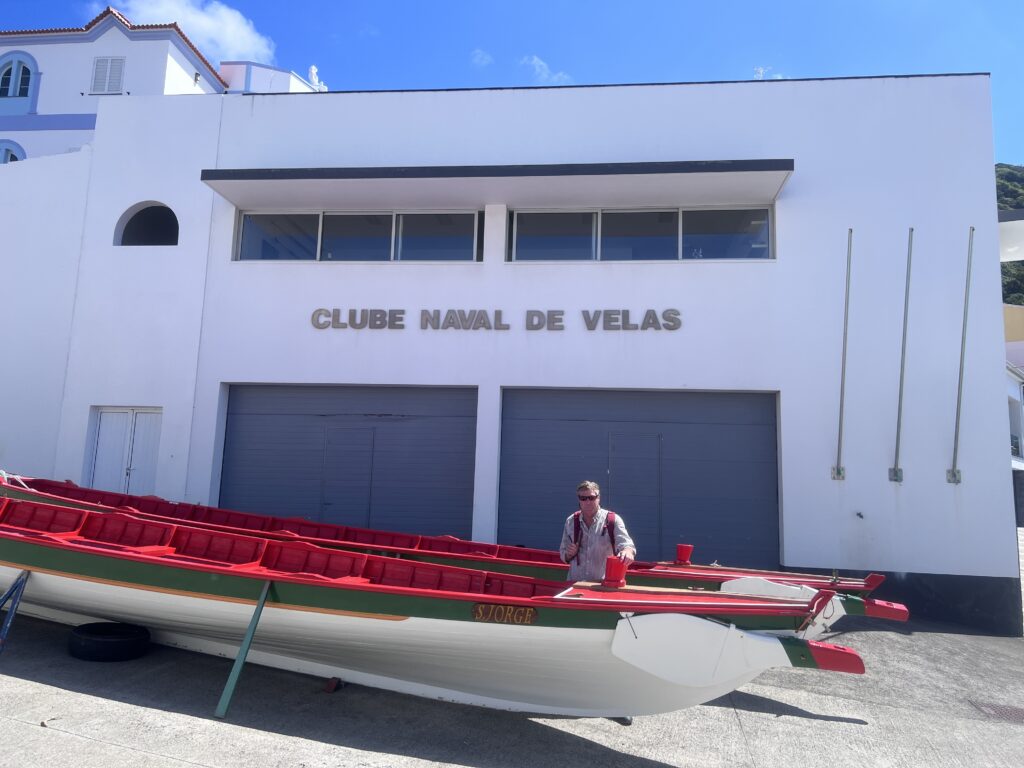
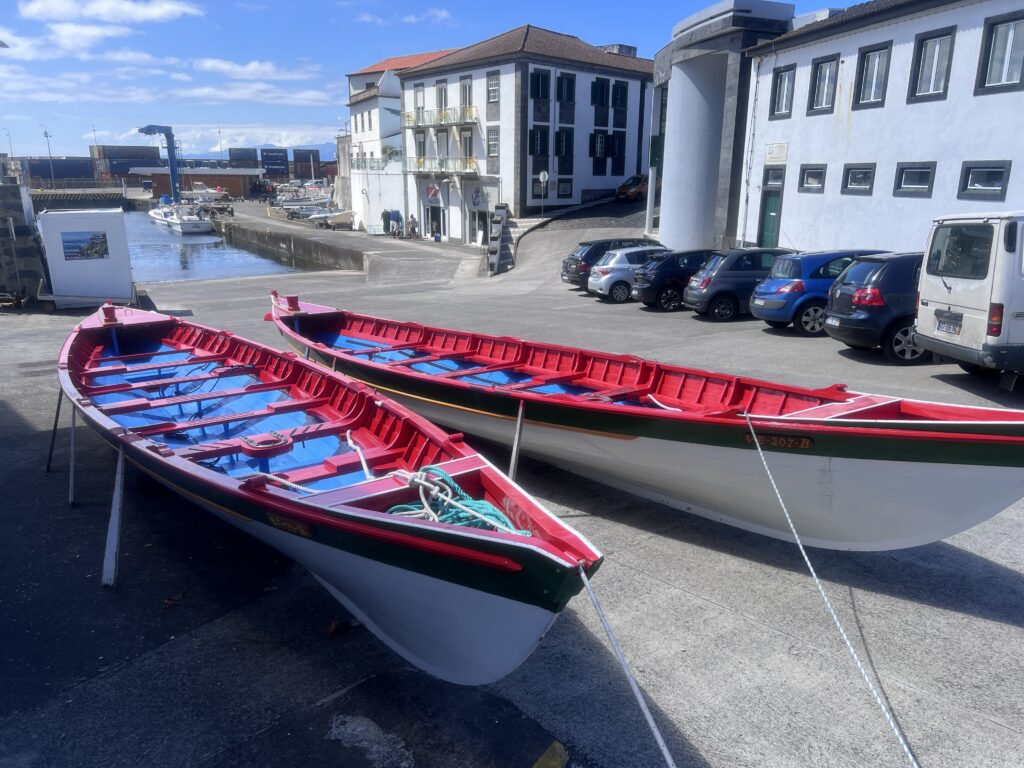
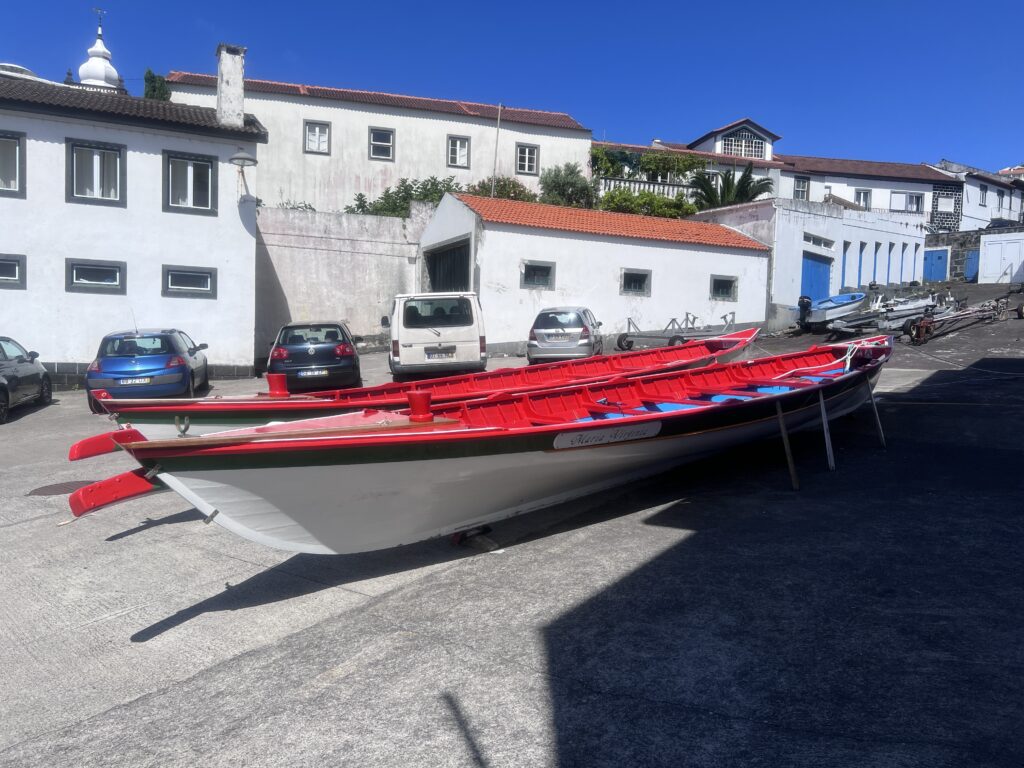
Nancy is conferring with her weather service on the best time to depart and it looks like anytime from tomorrow to Thursday will be good. So we’re doing a bit of laundry and making some water. I did a bit of adjusting to the routing of the main halyard to ease handling, scrubbed the bottom, and checked all the fluids, so the boat is ready for the next 1200nm leg to Crosshaven in Ireland. That’s all for now. Check the new entries in Book Nook, drop a line, and come join us for an adventure.
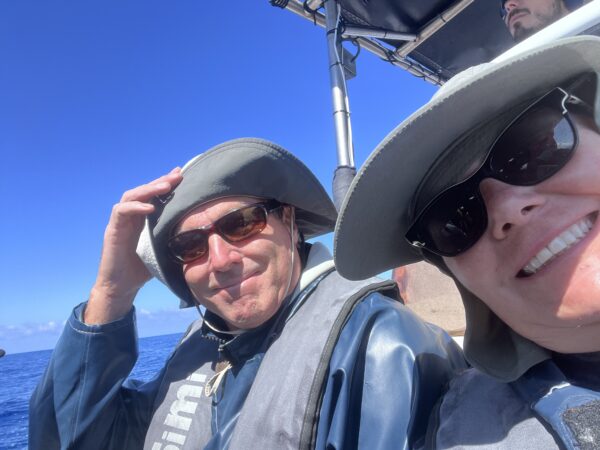















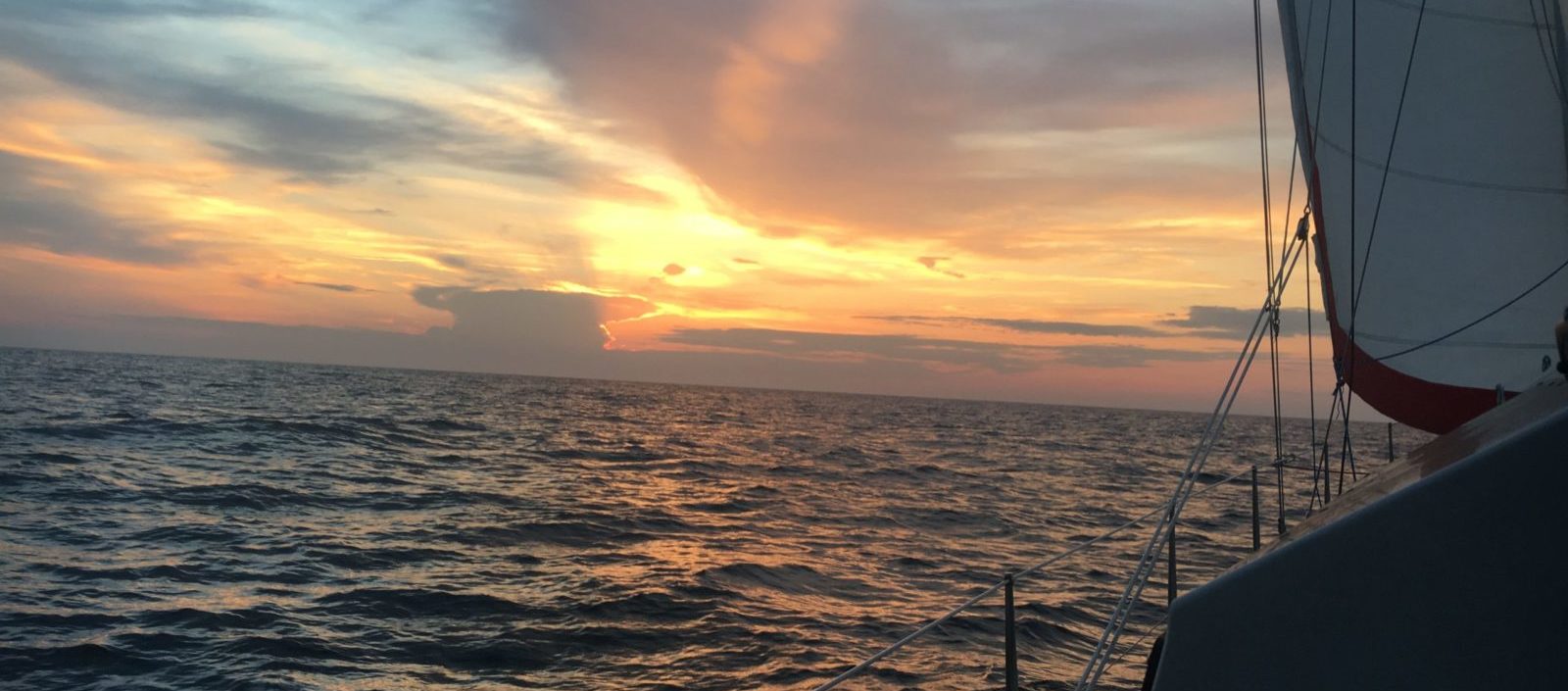
Jack Anderson
Chris